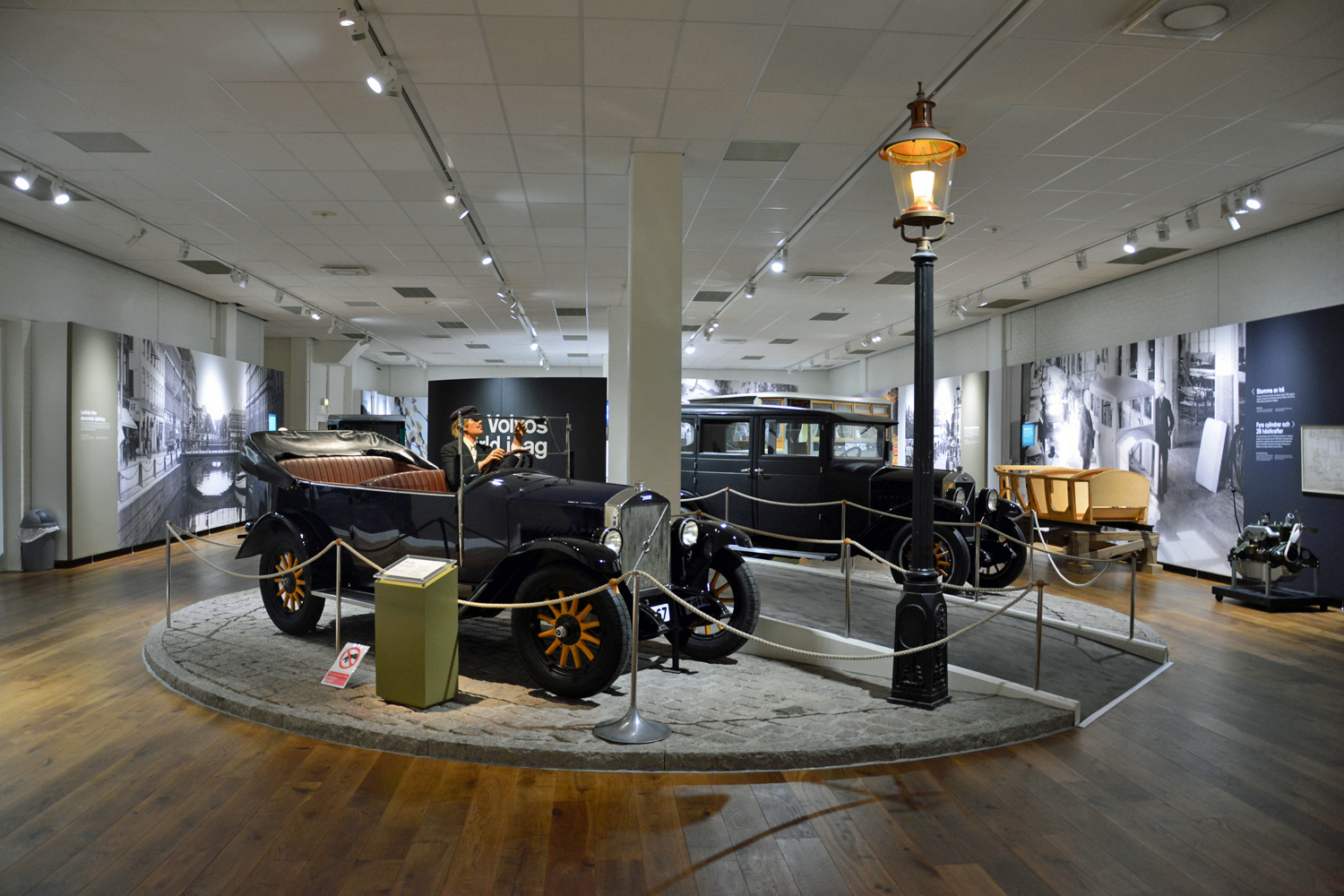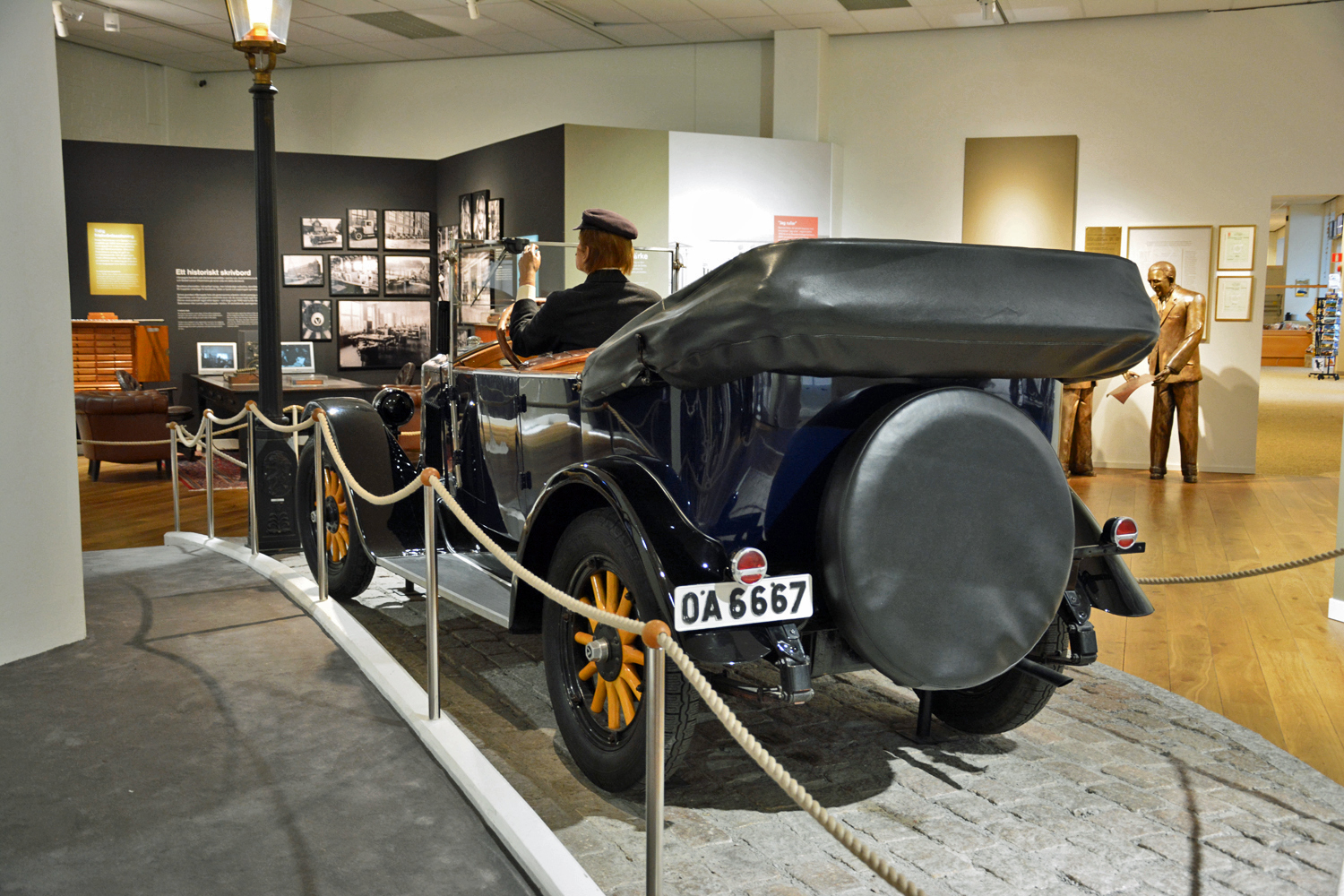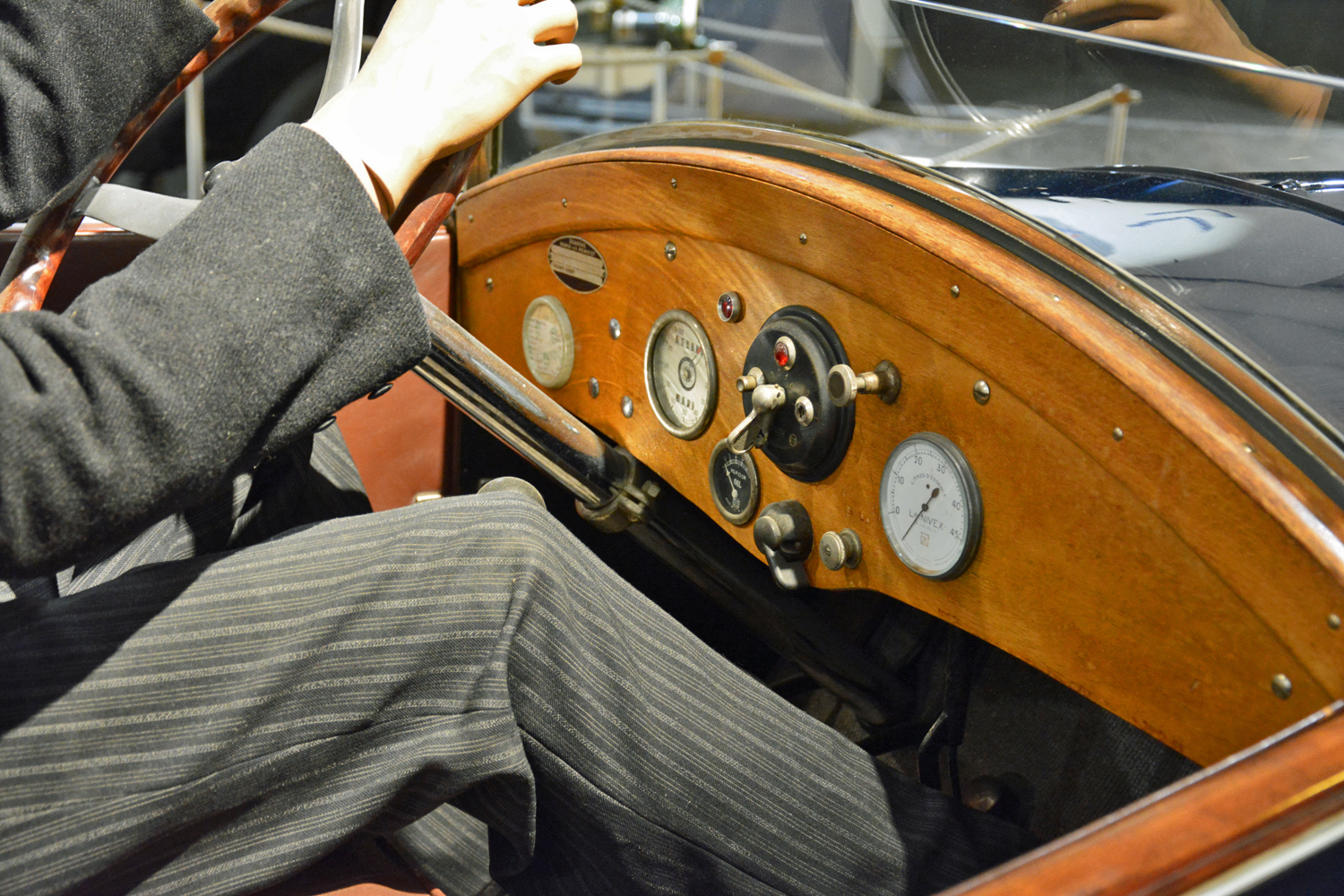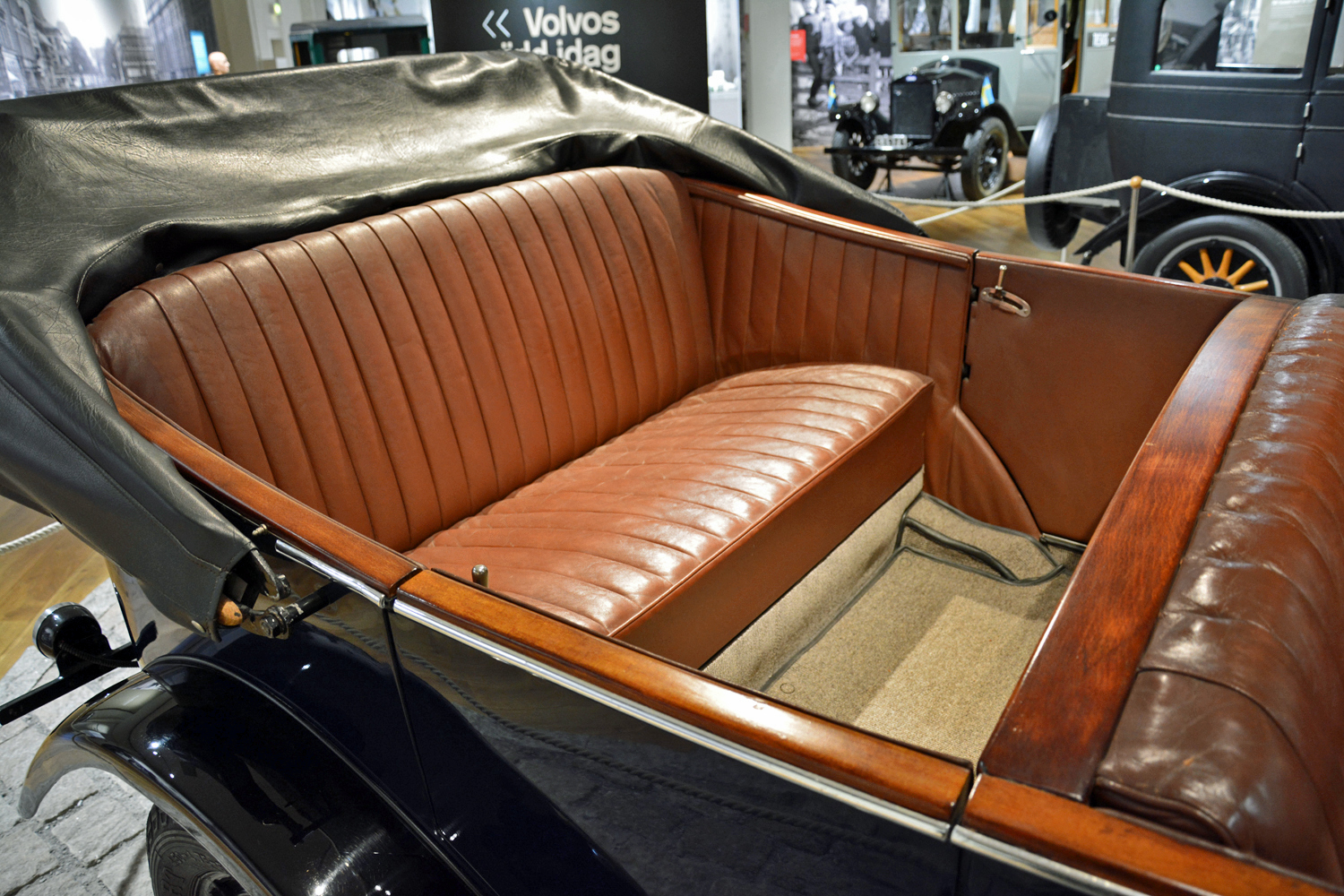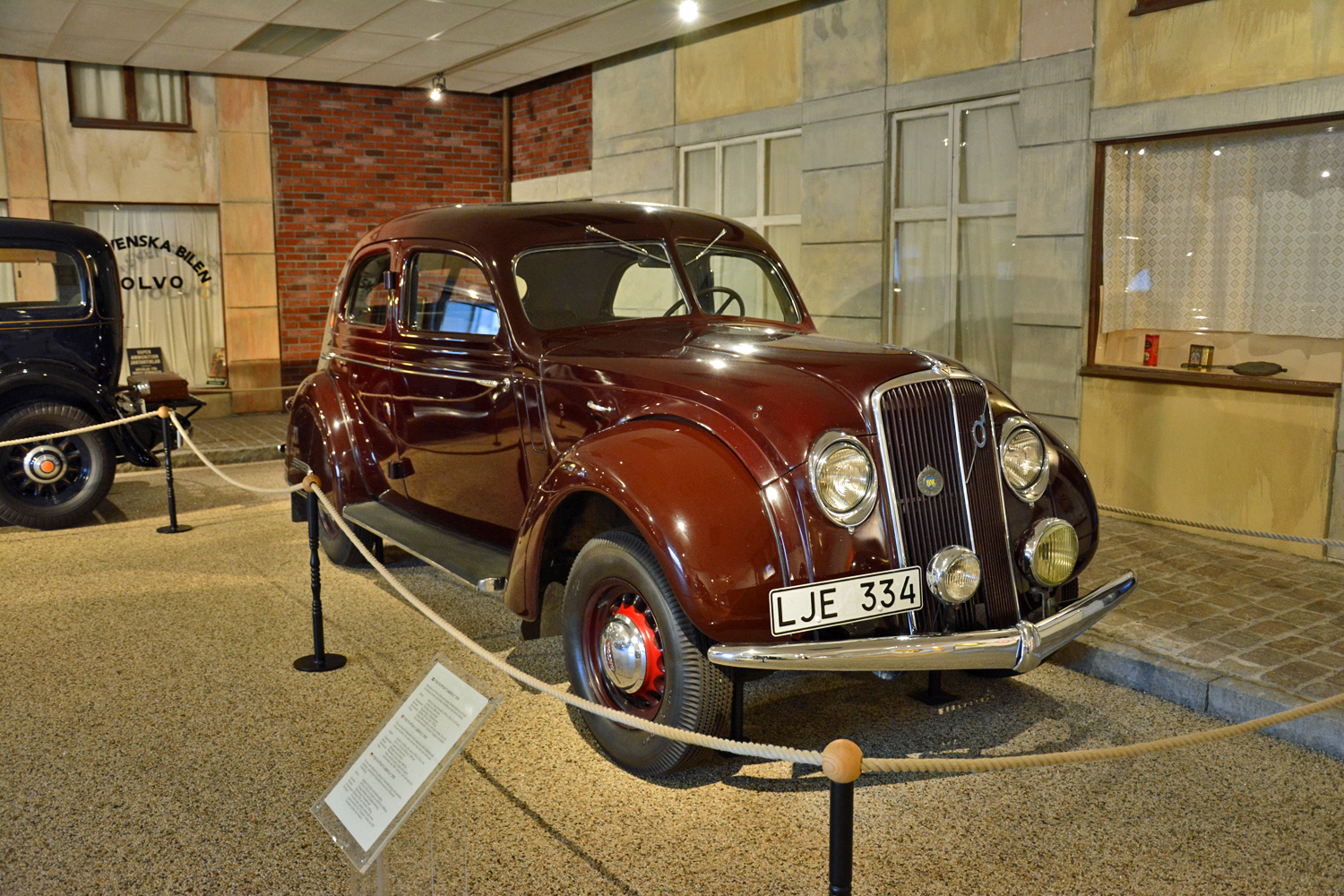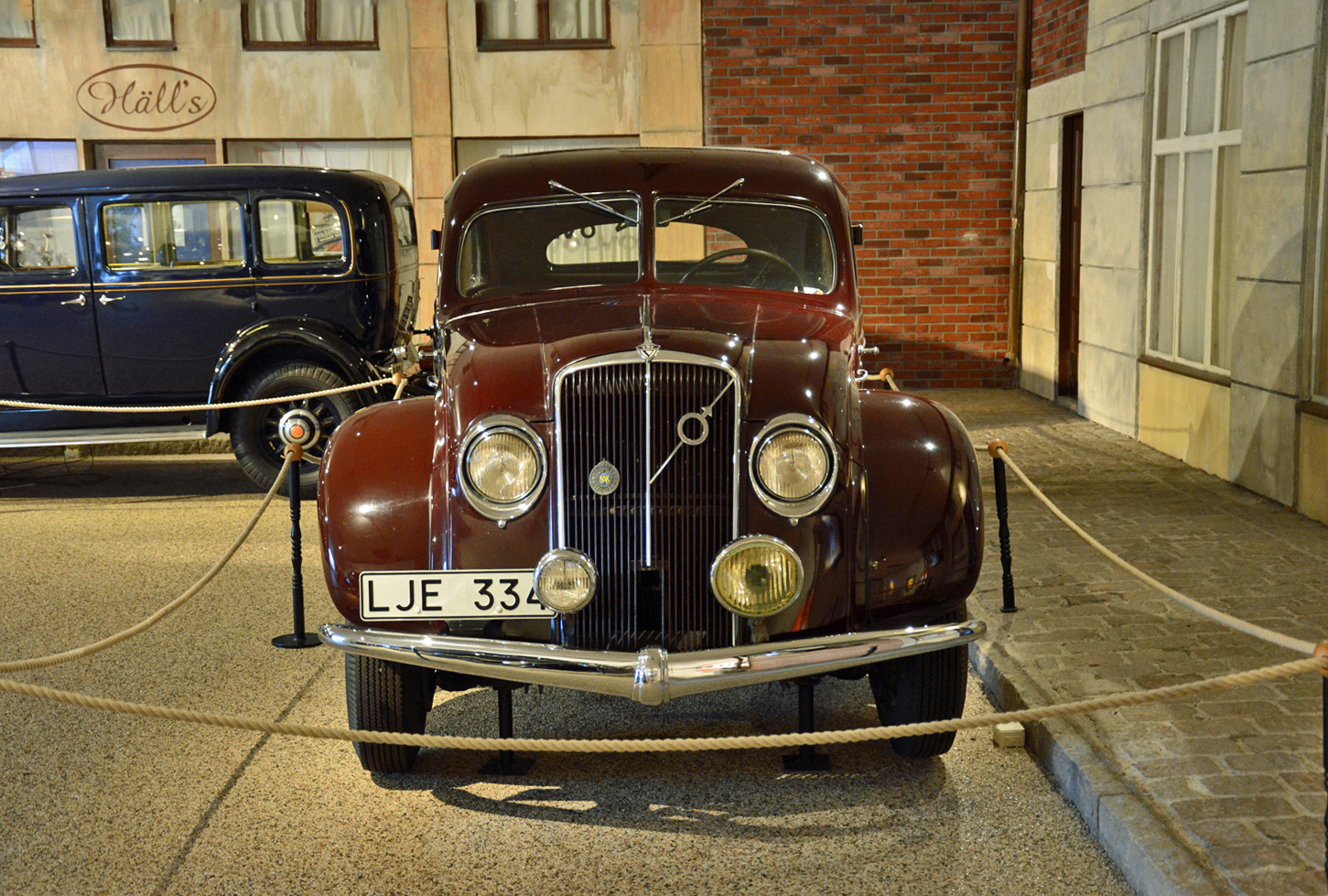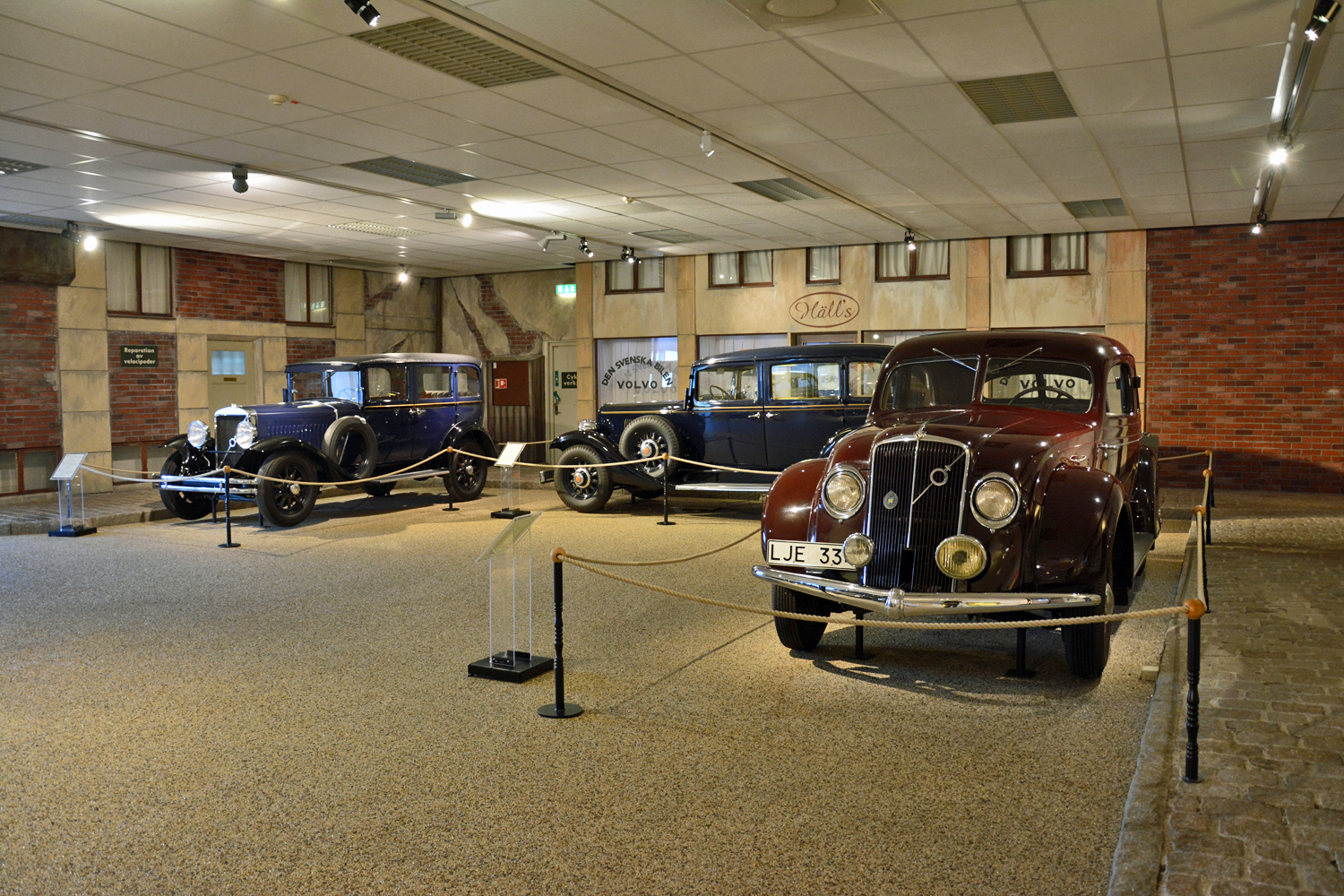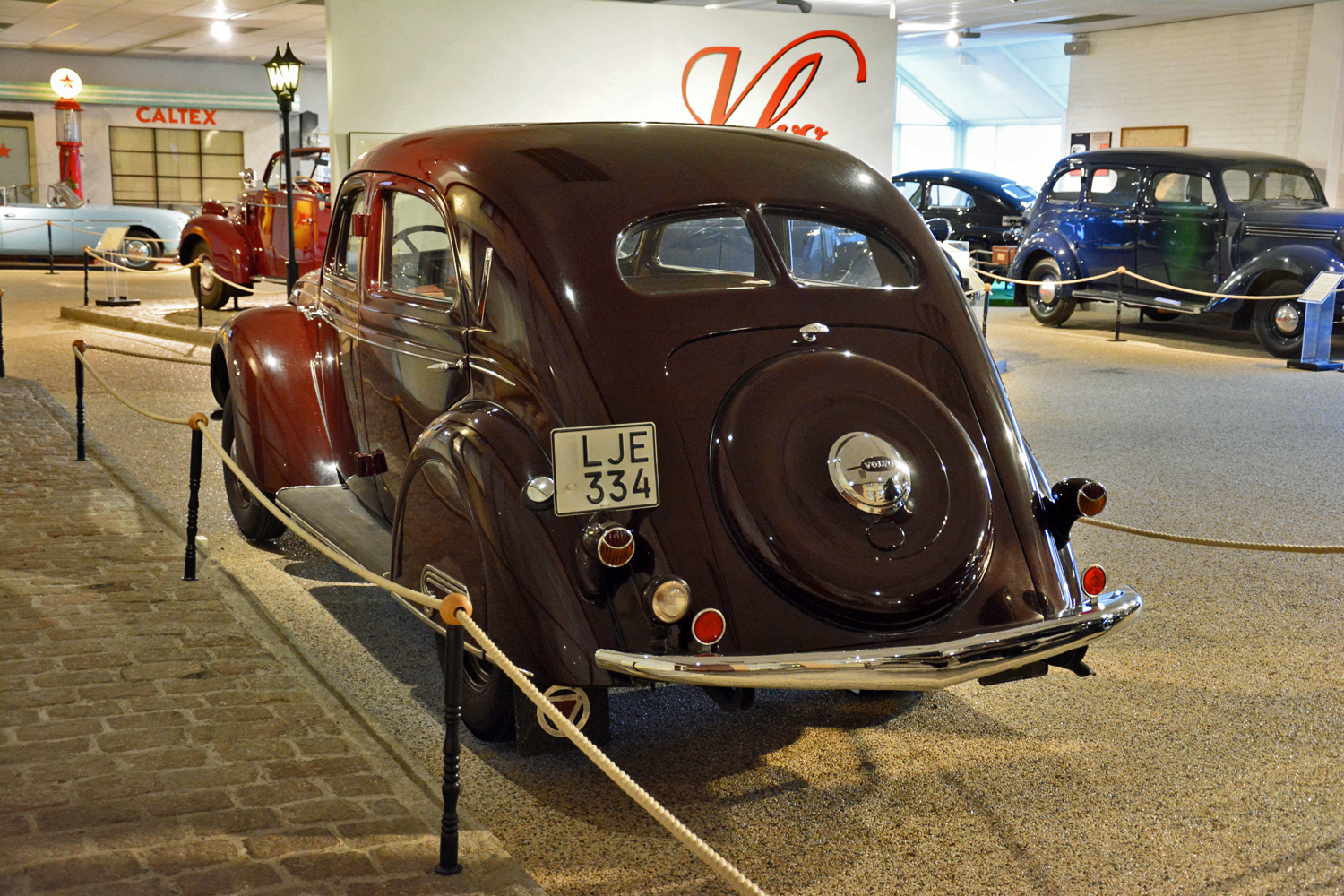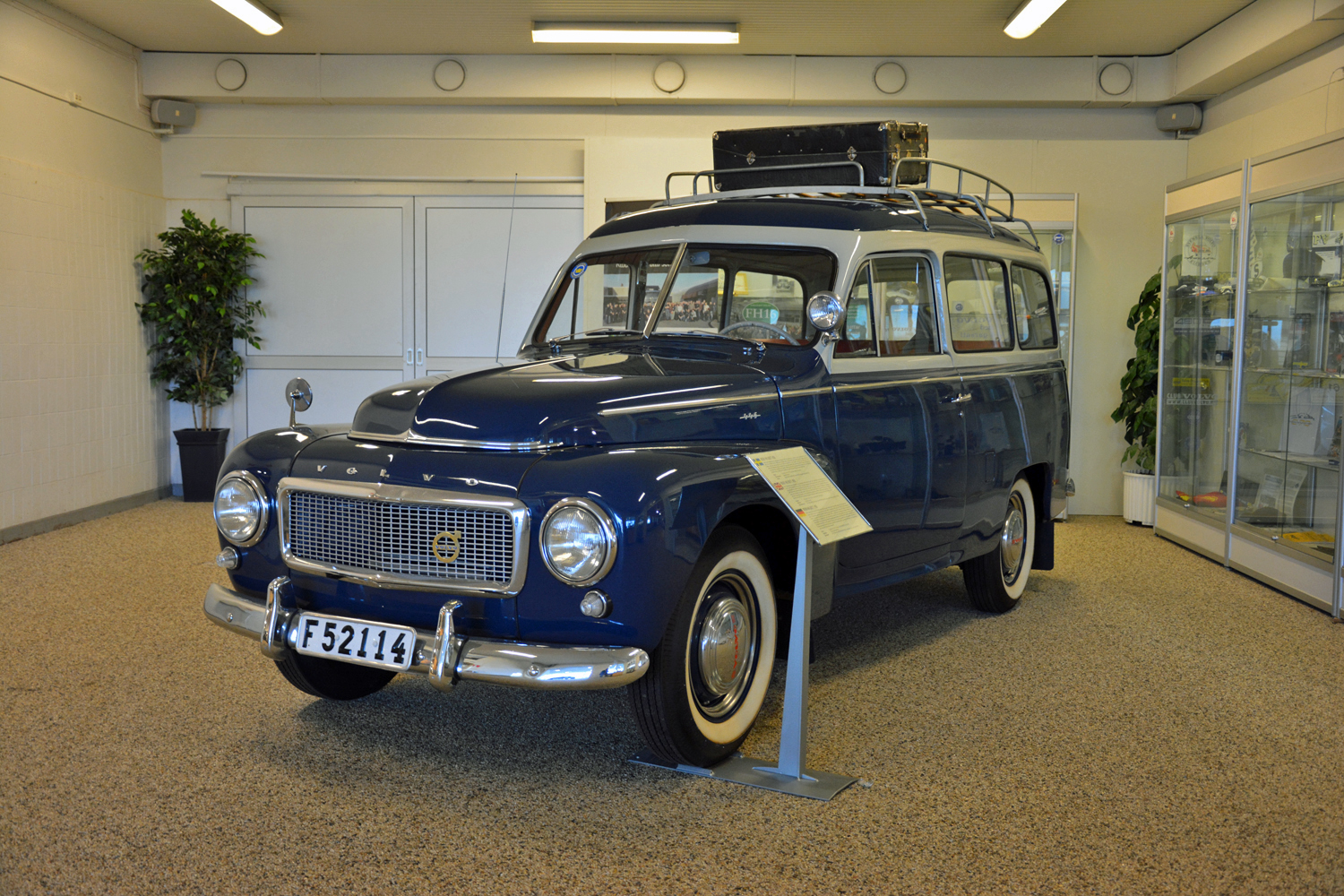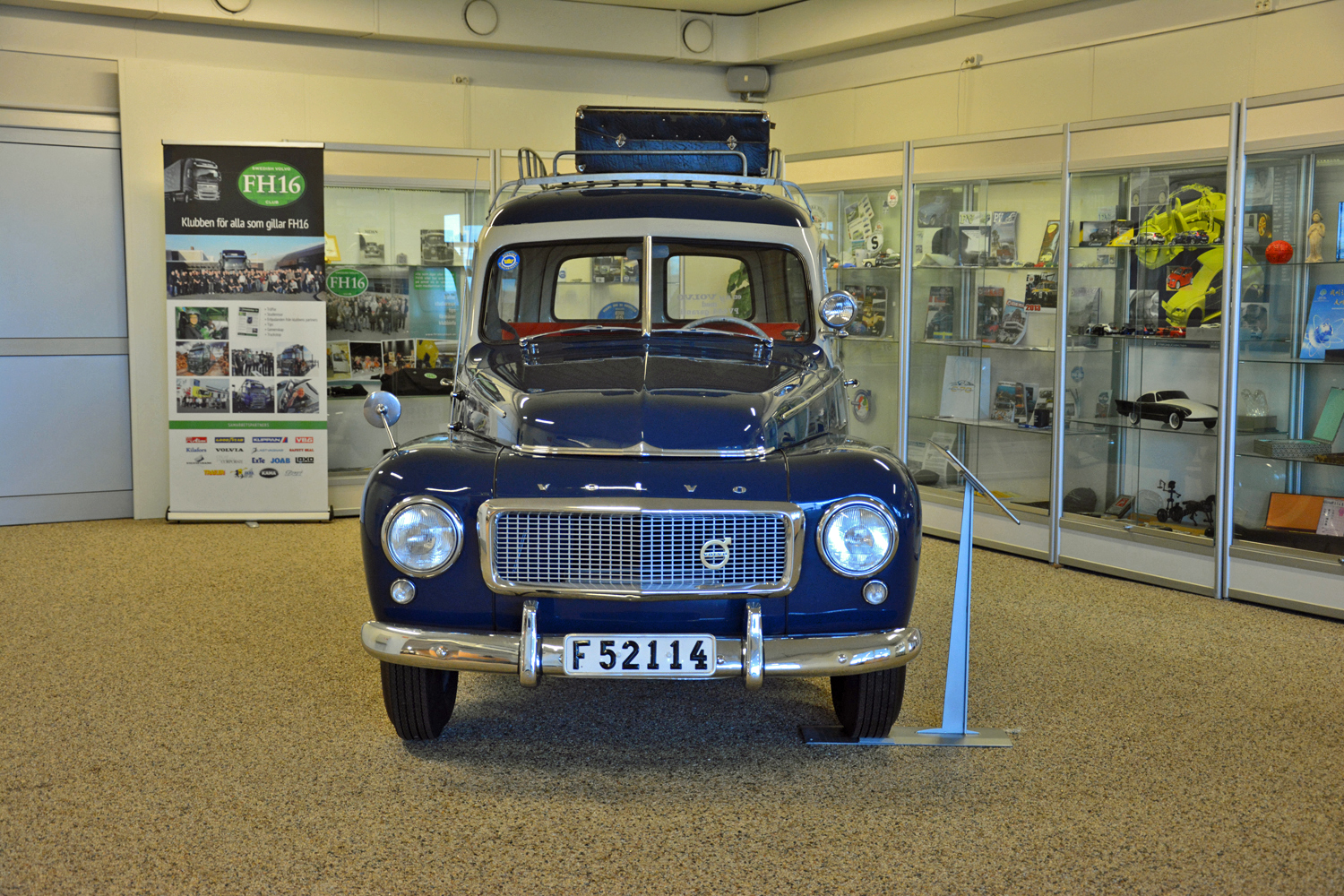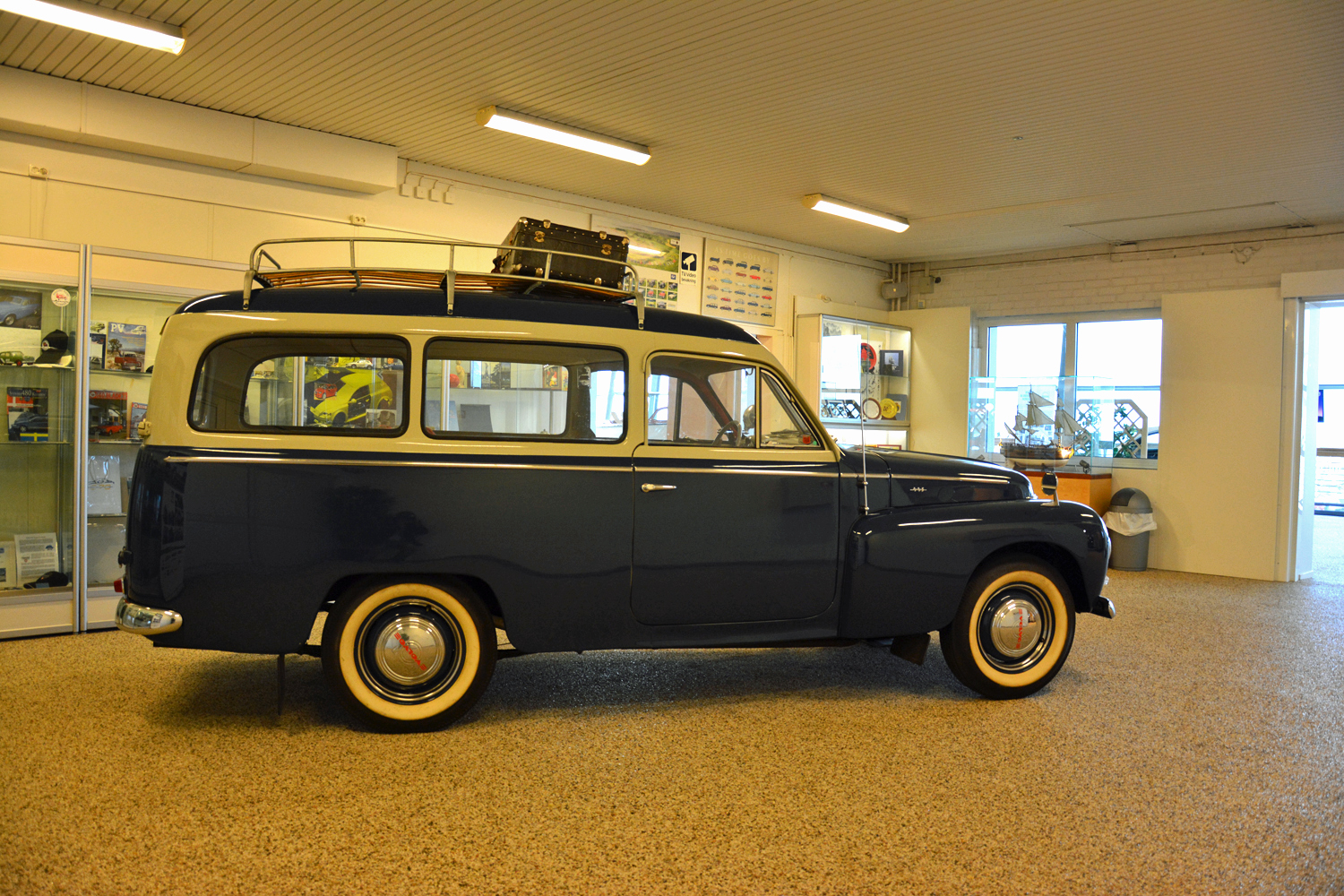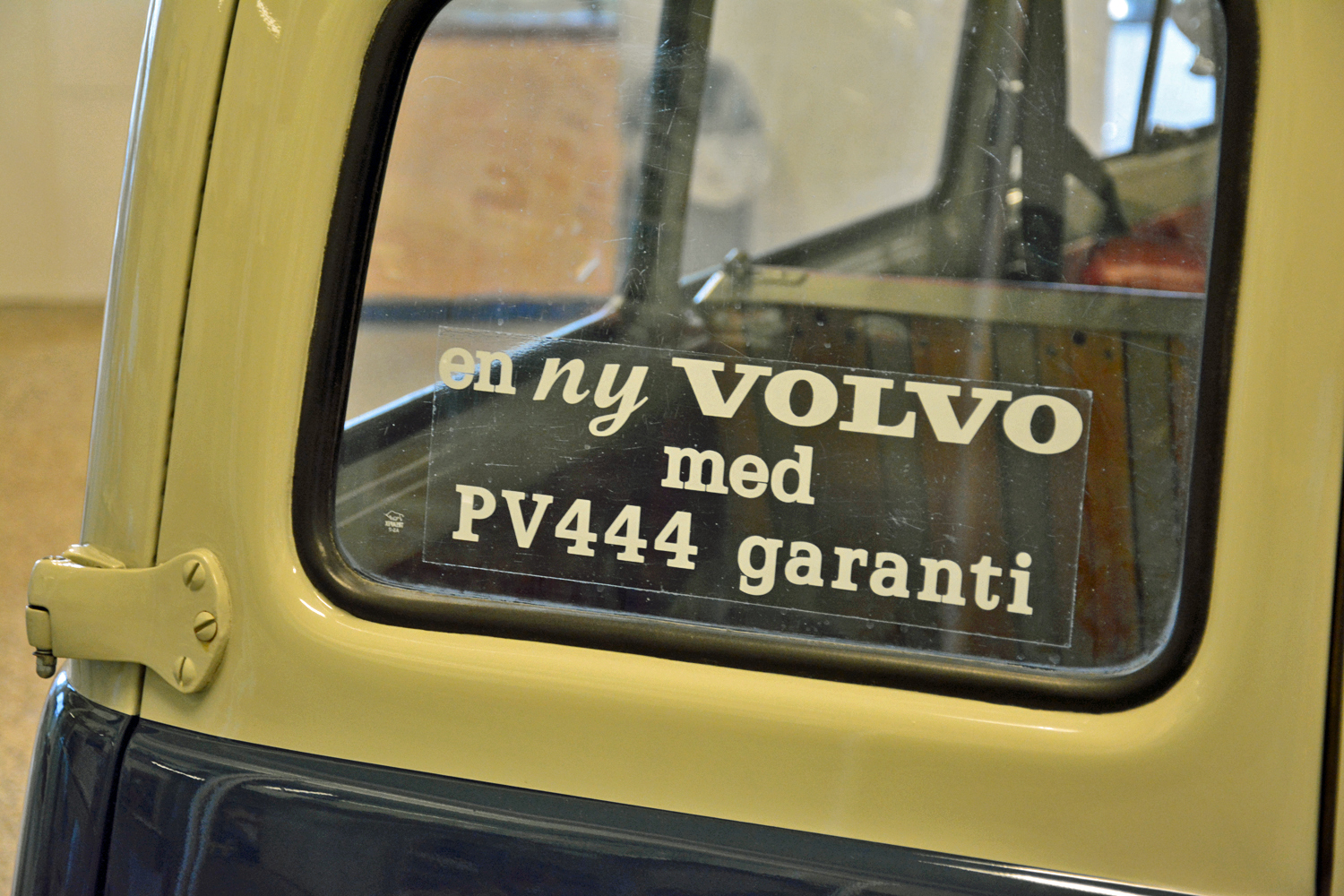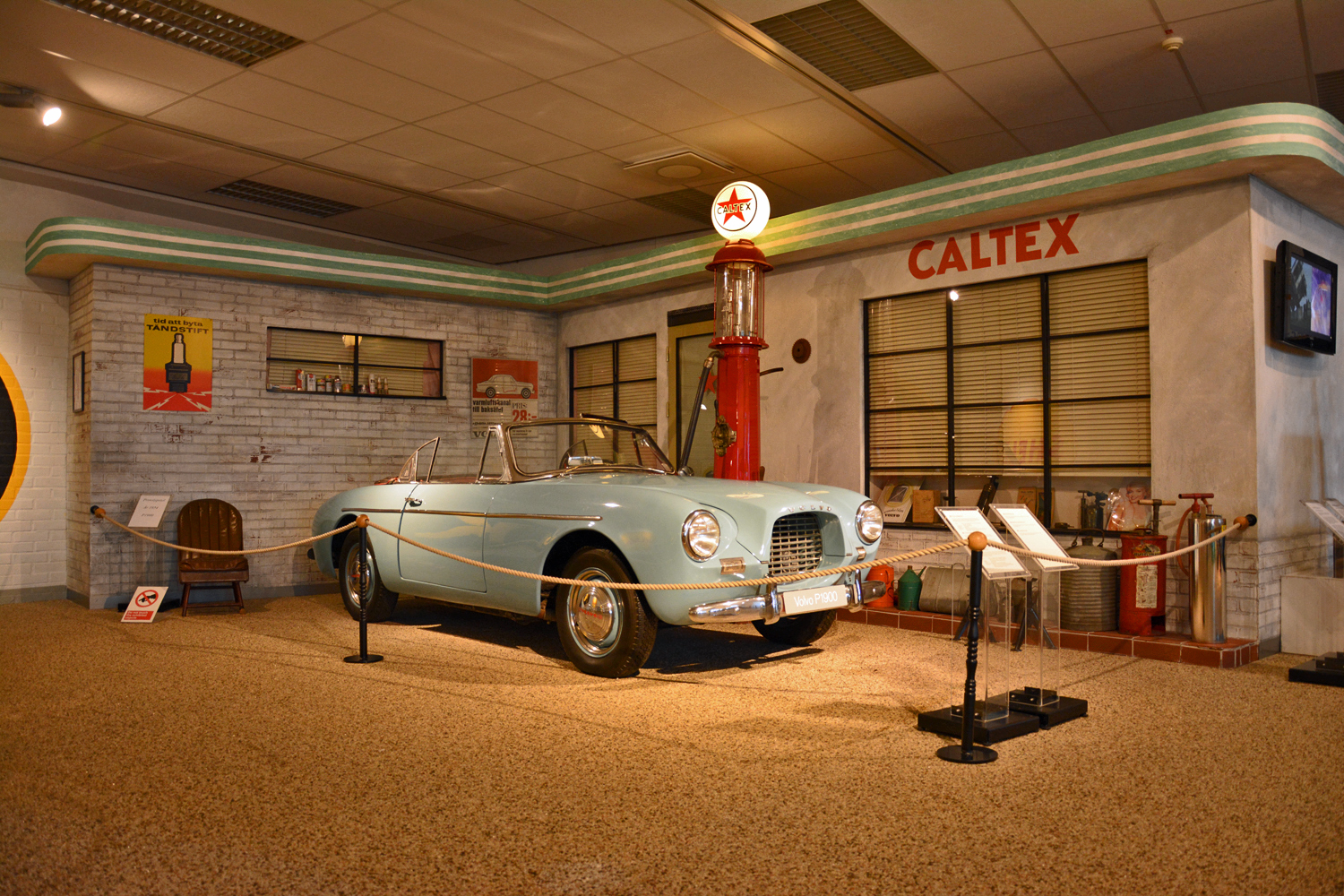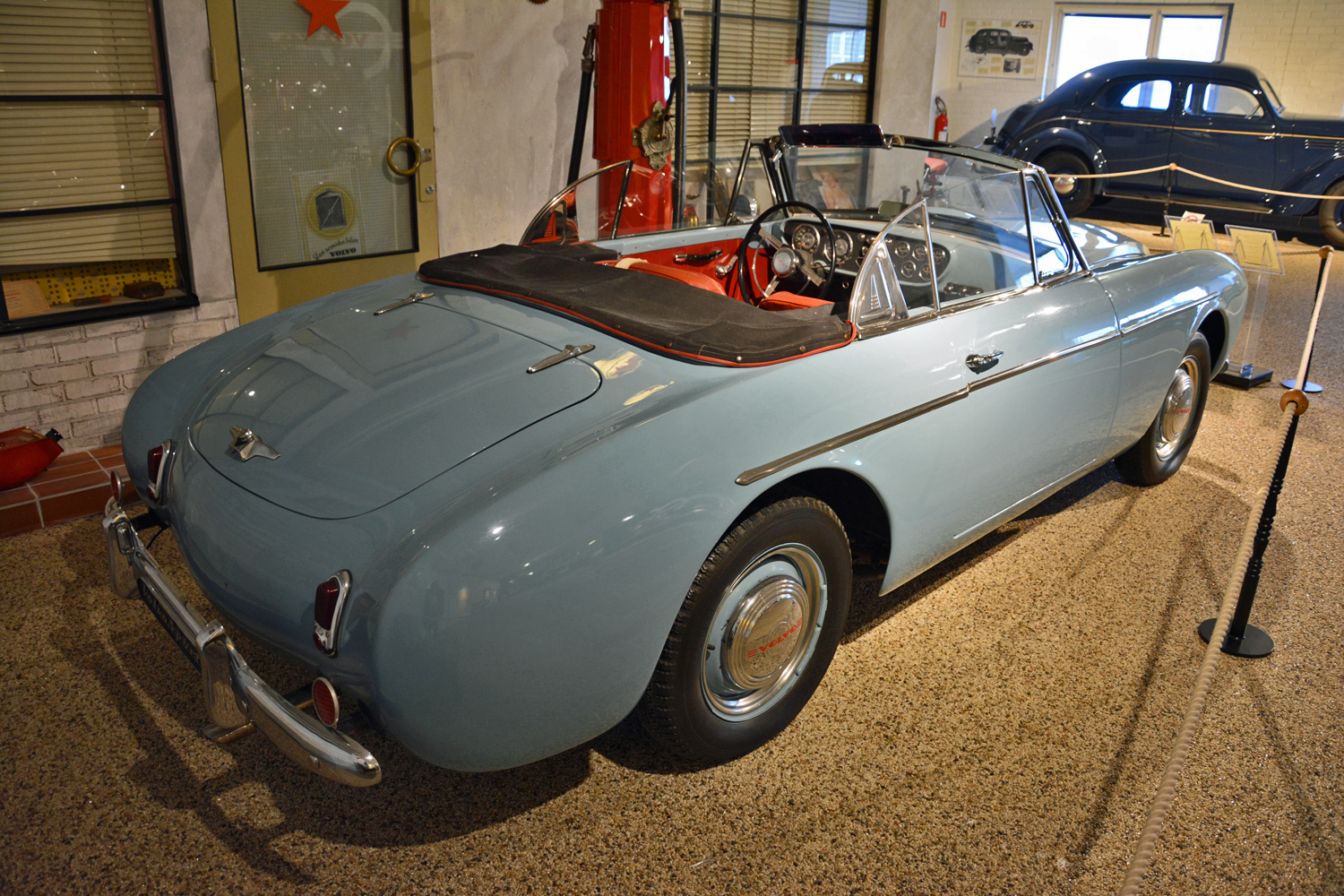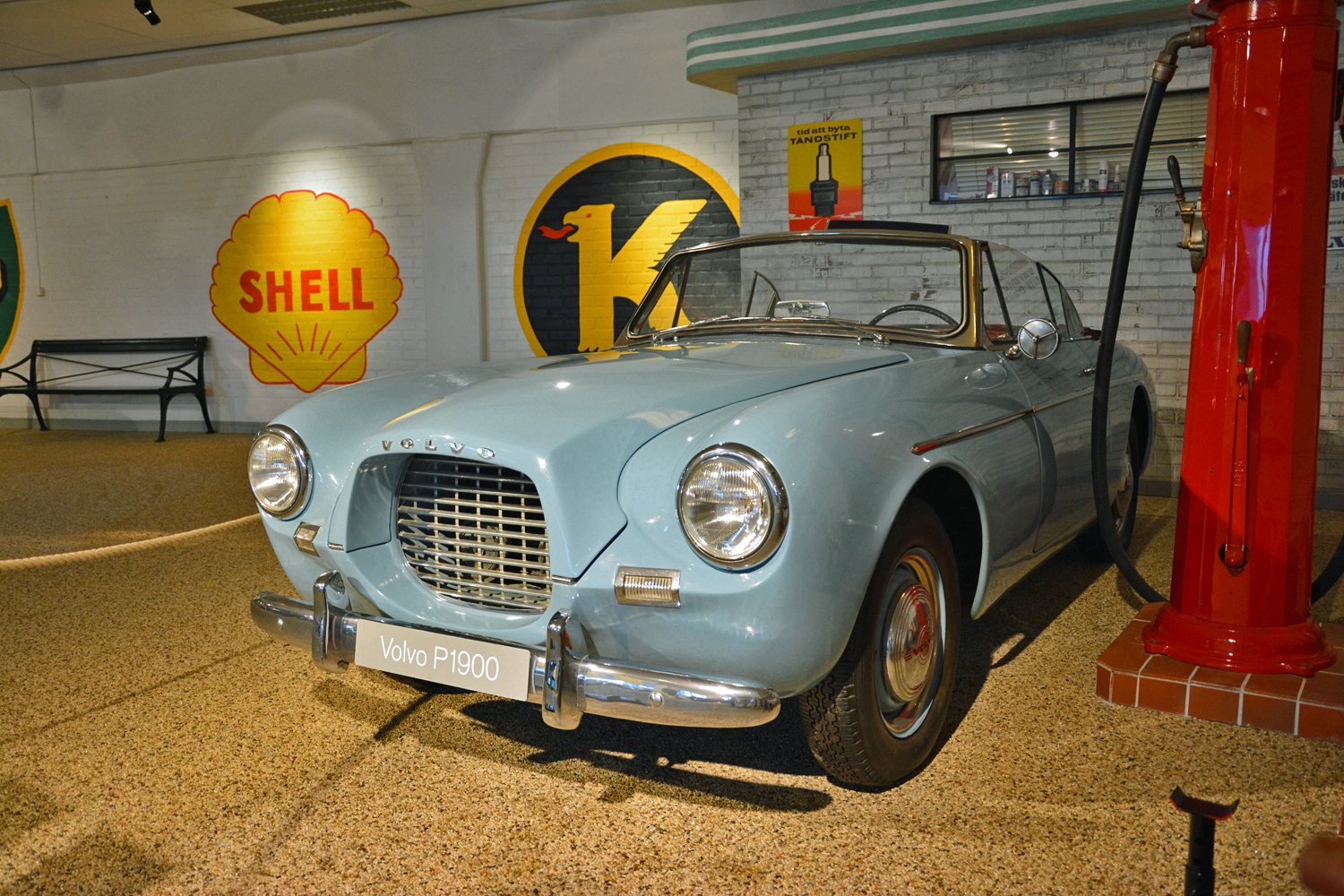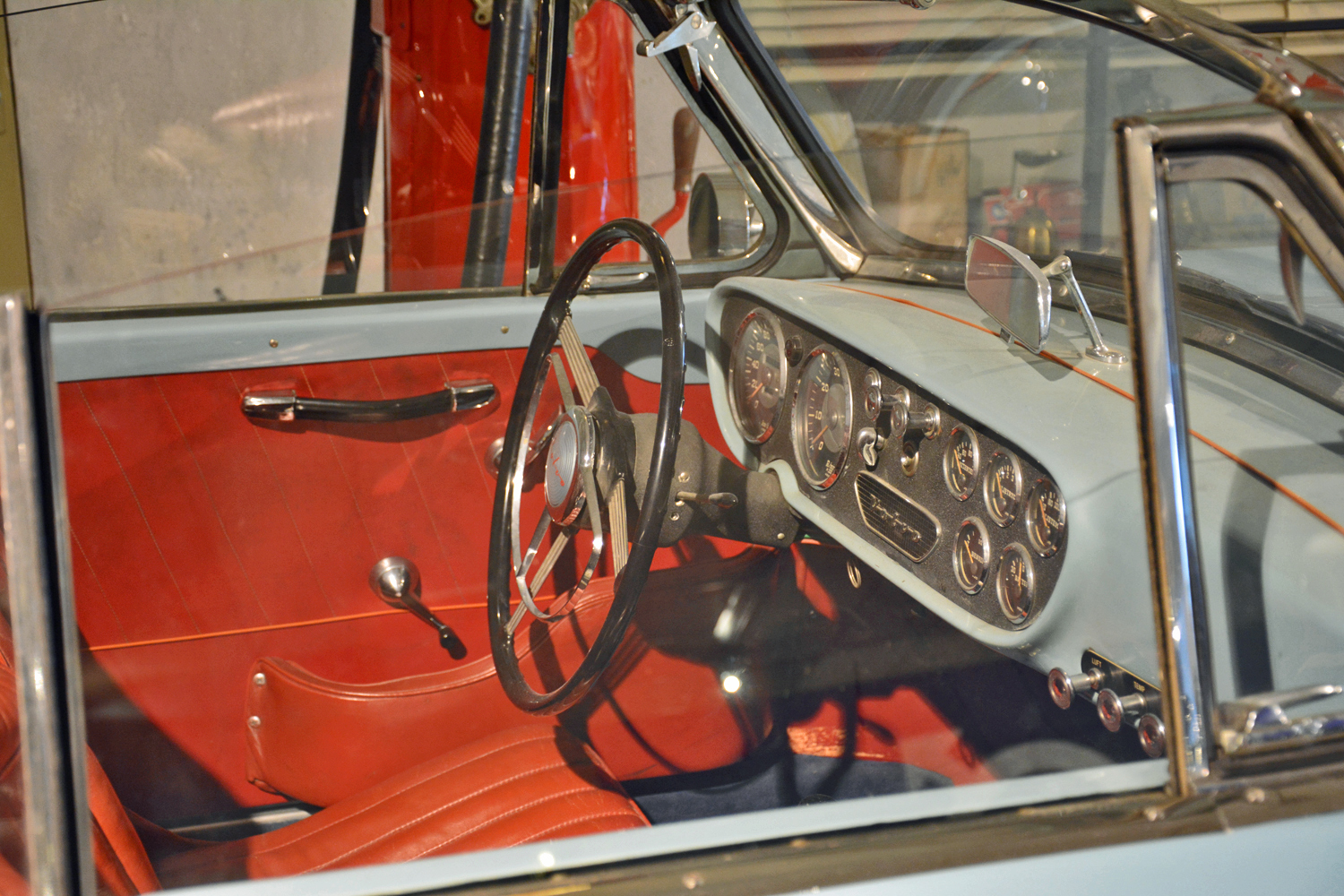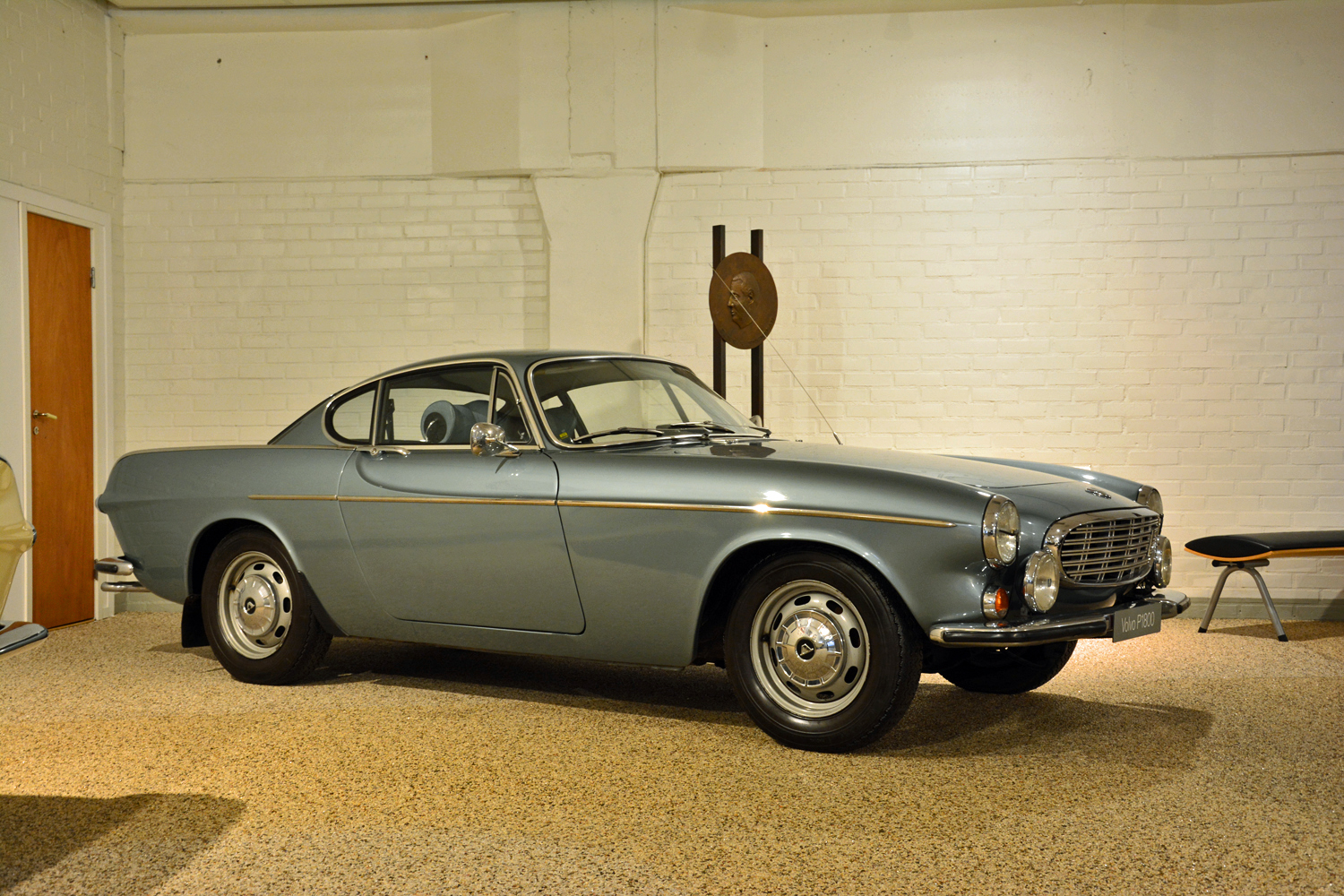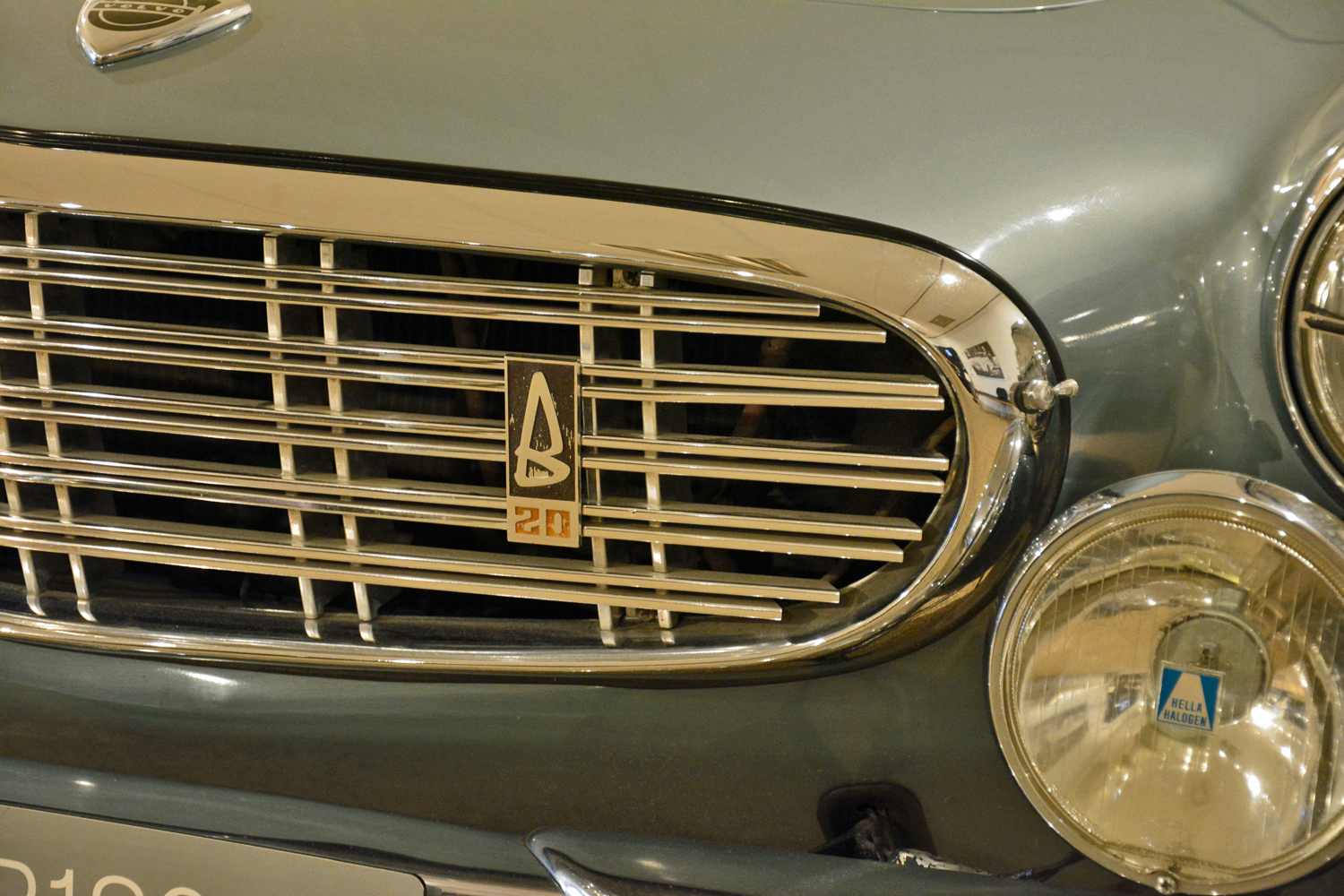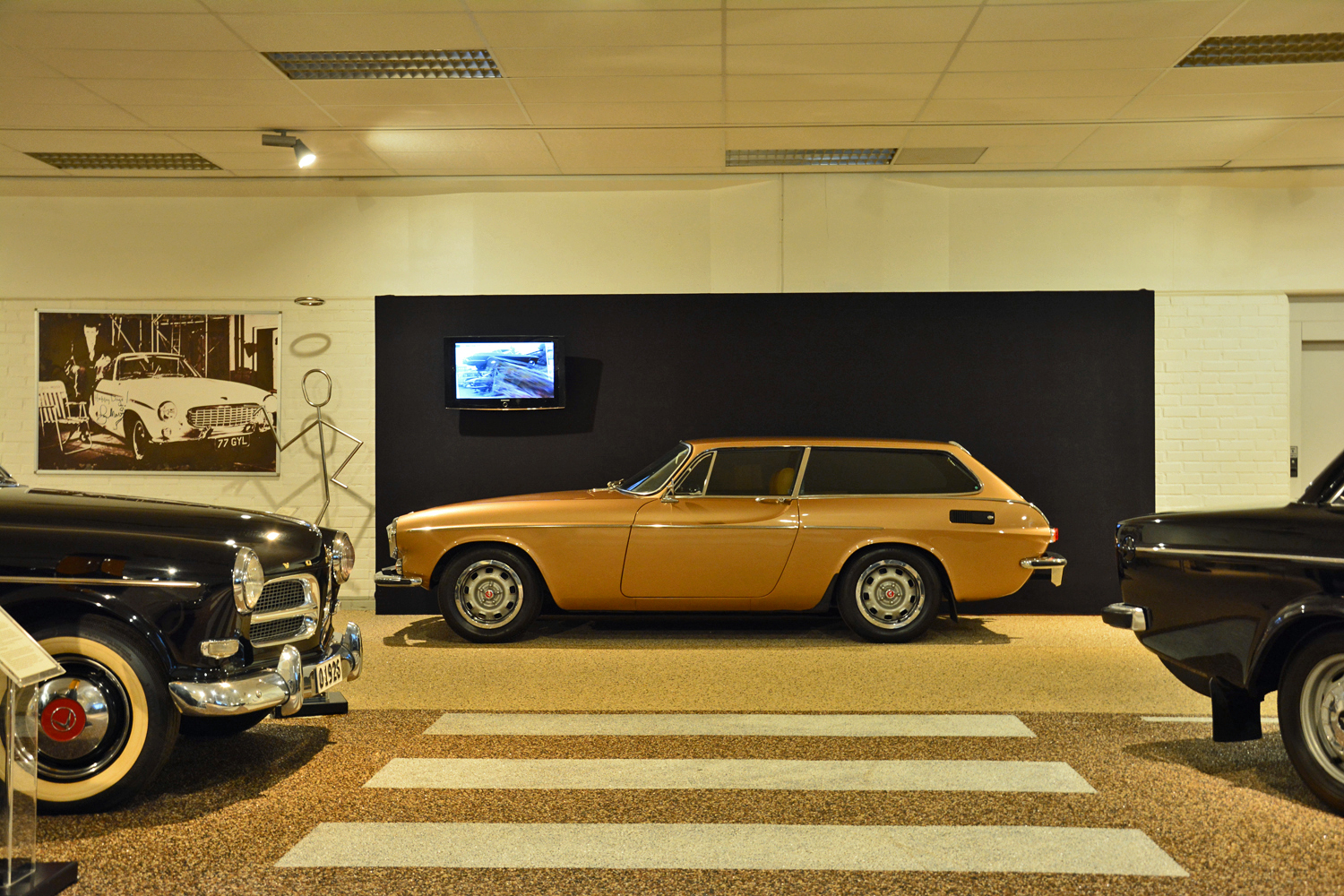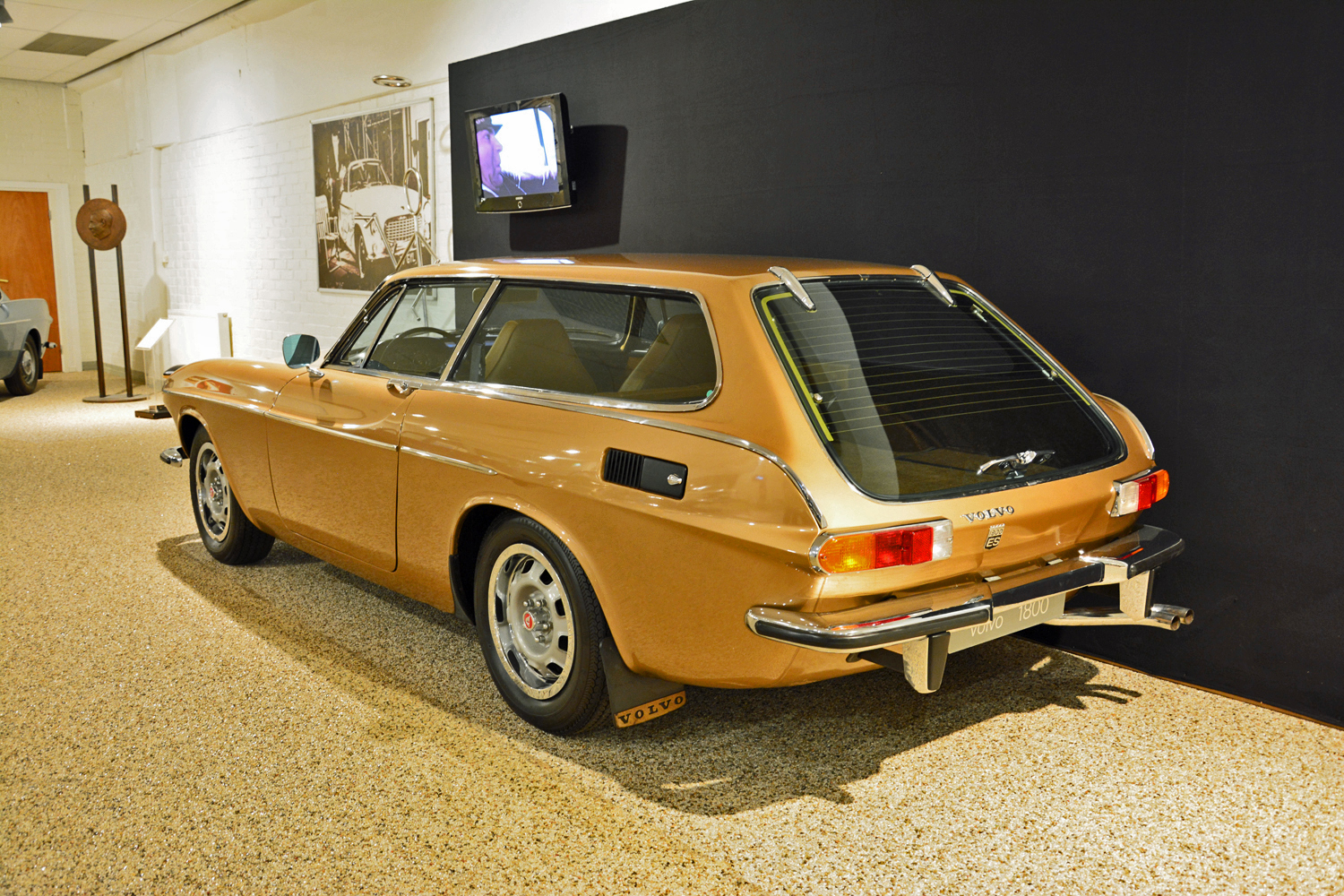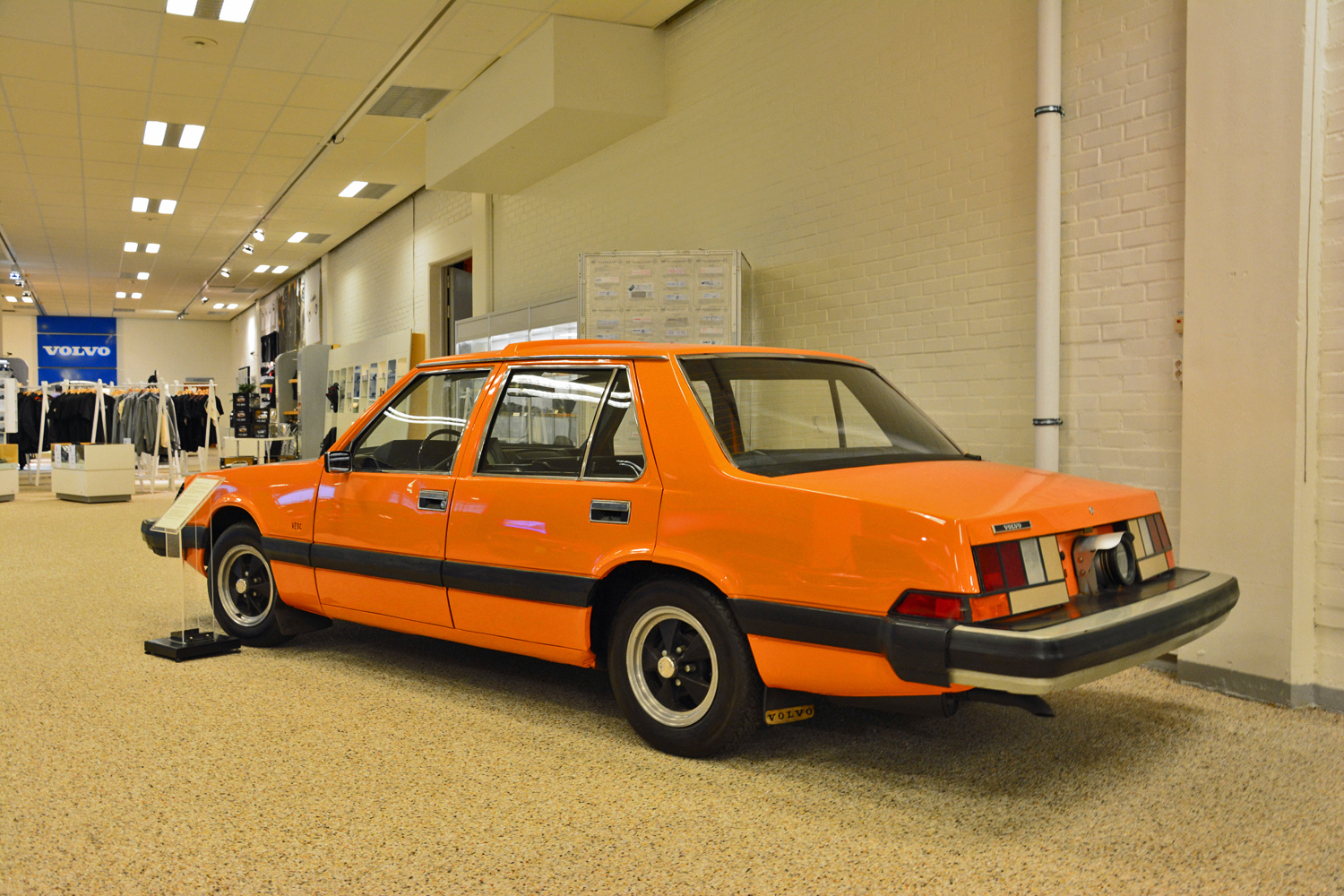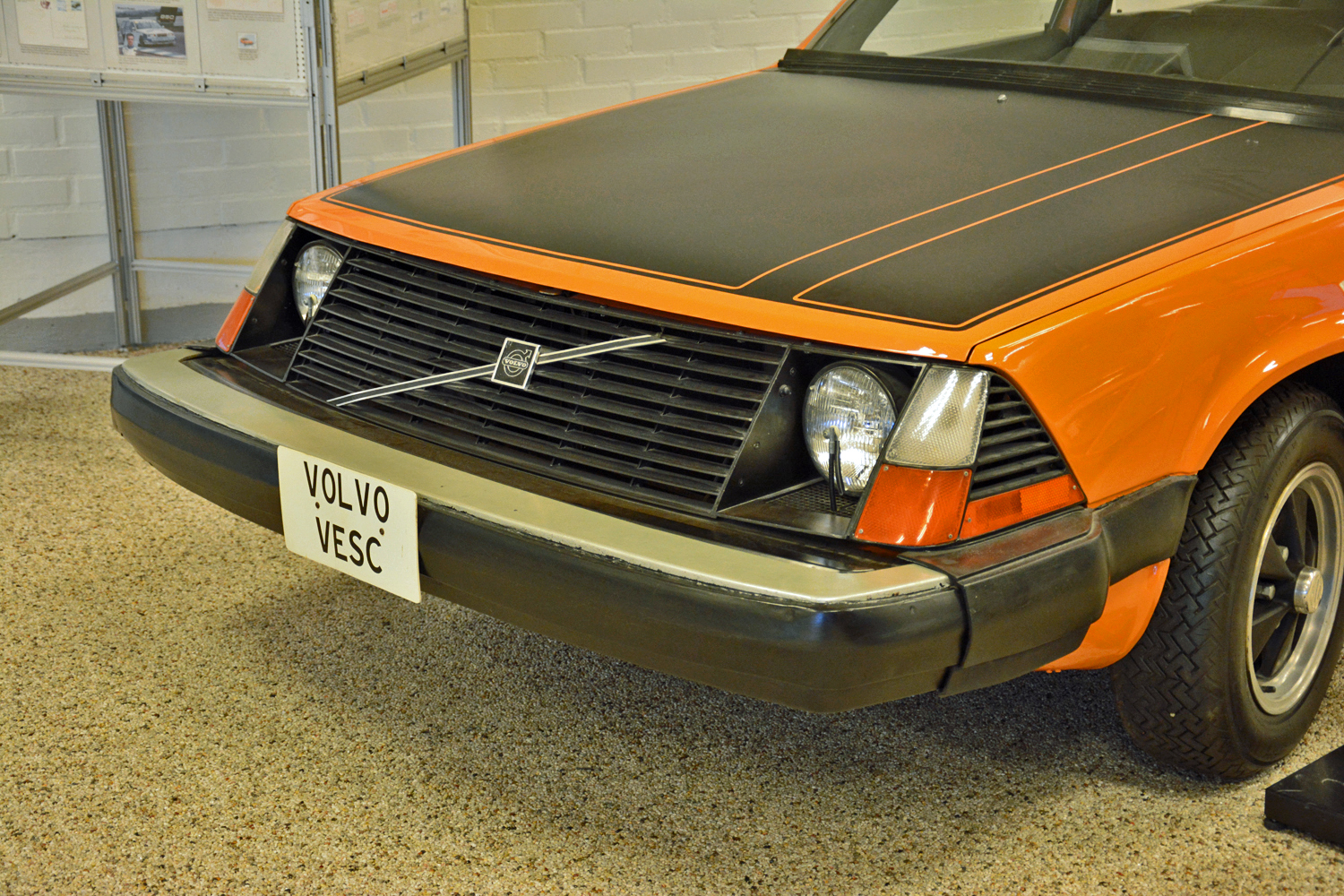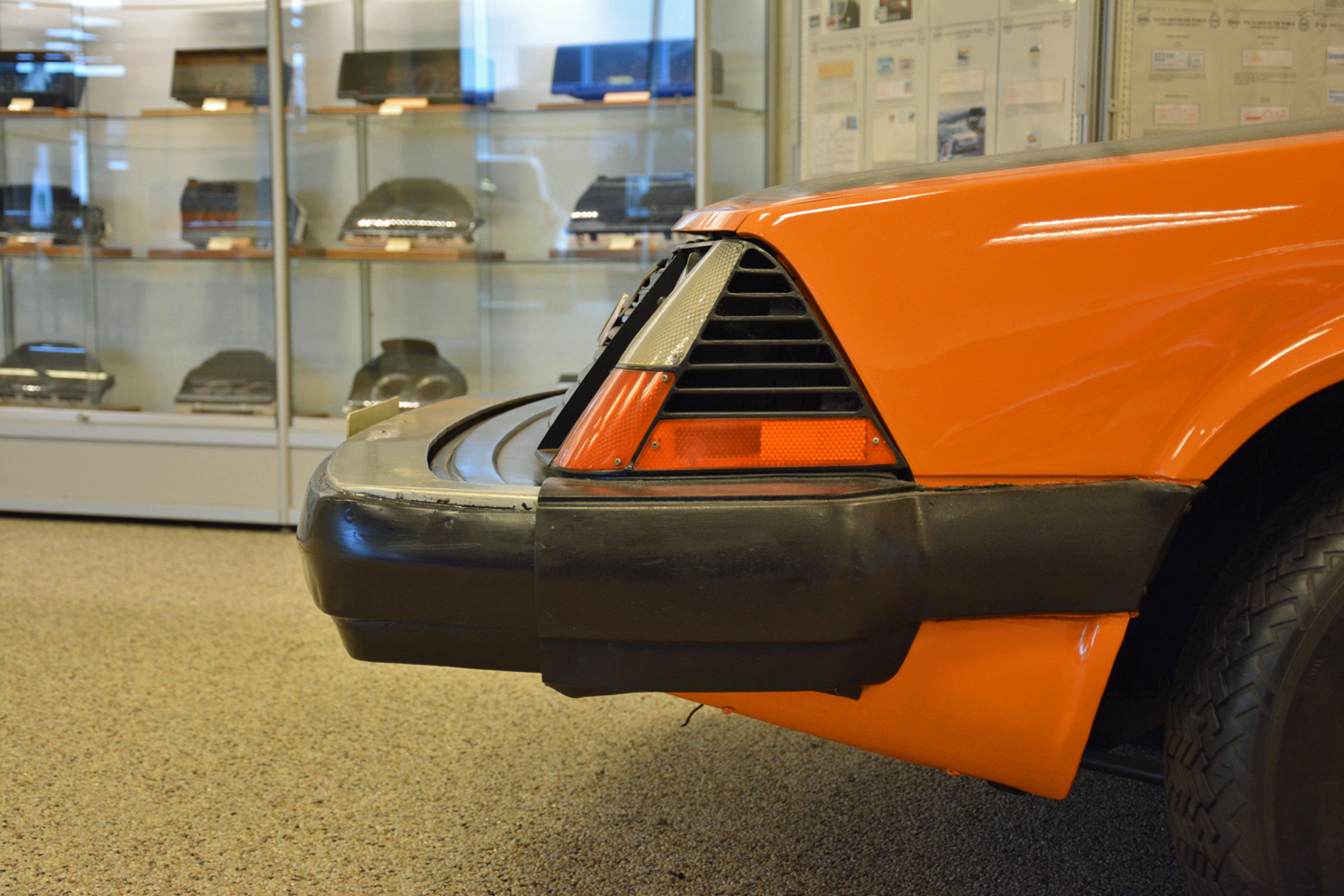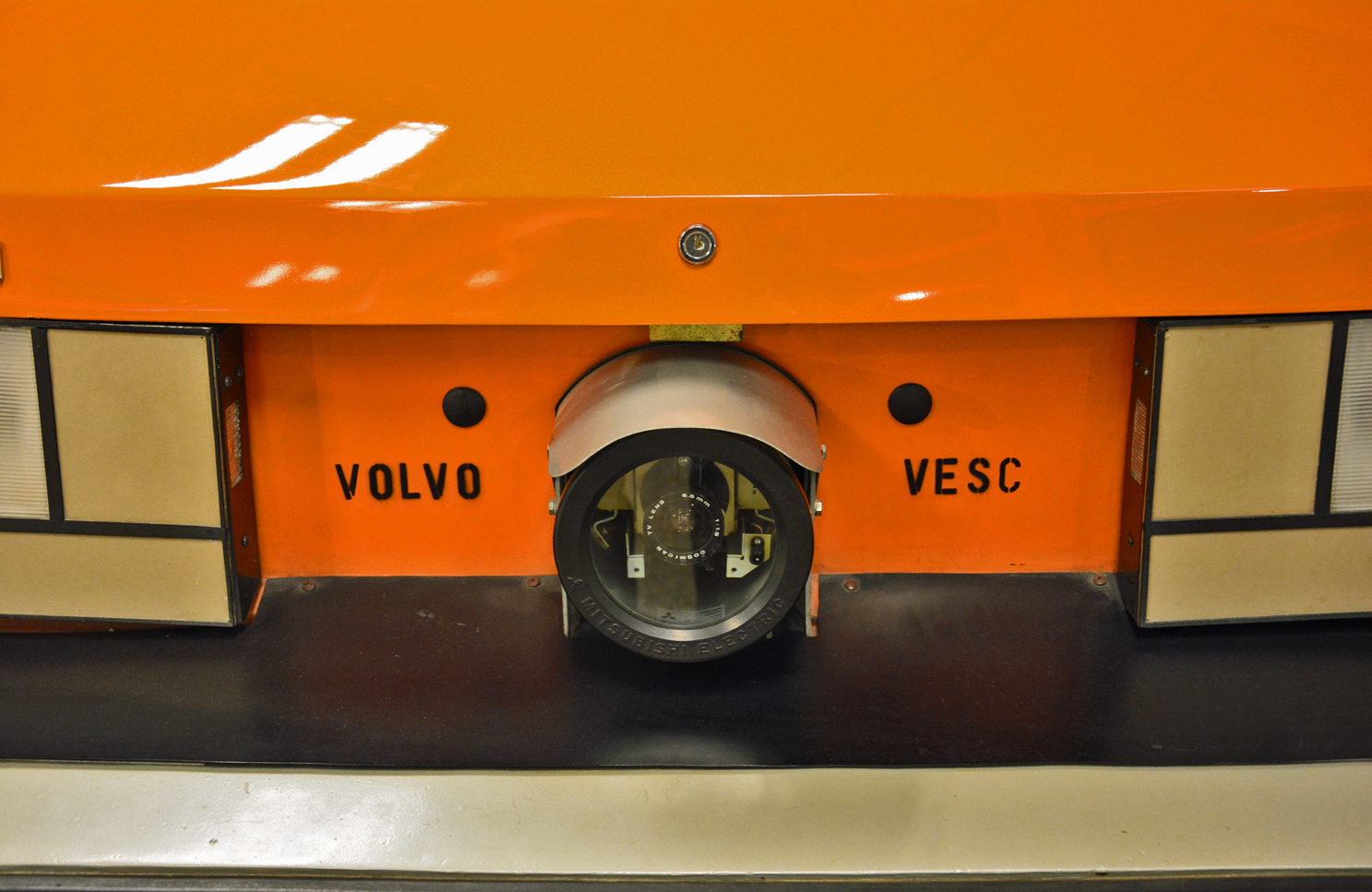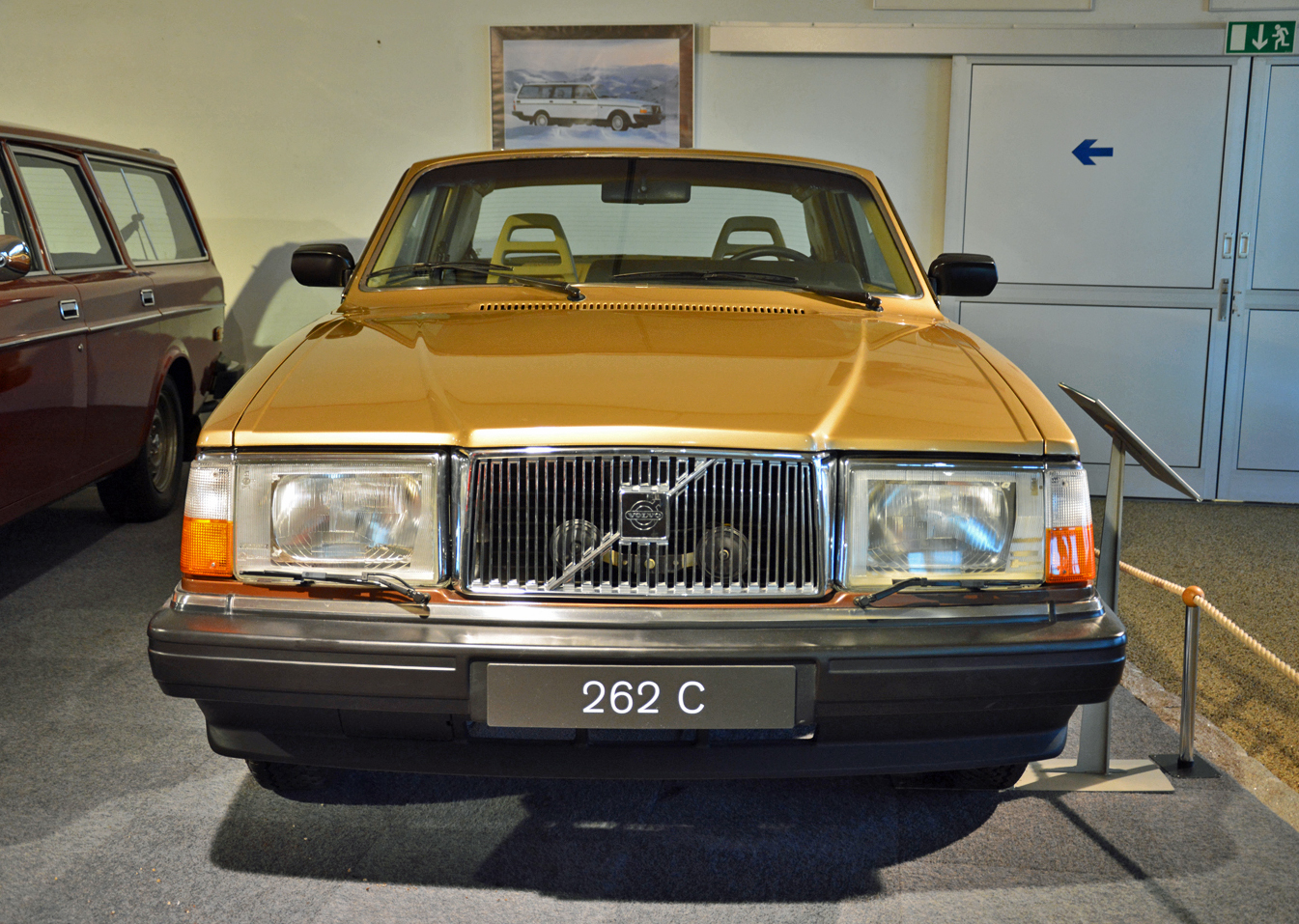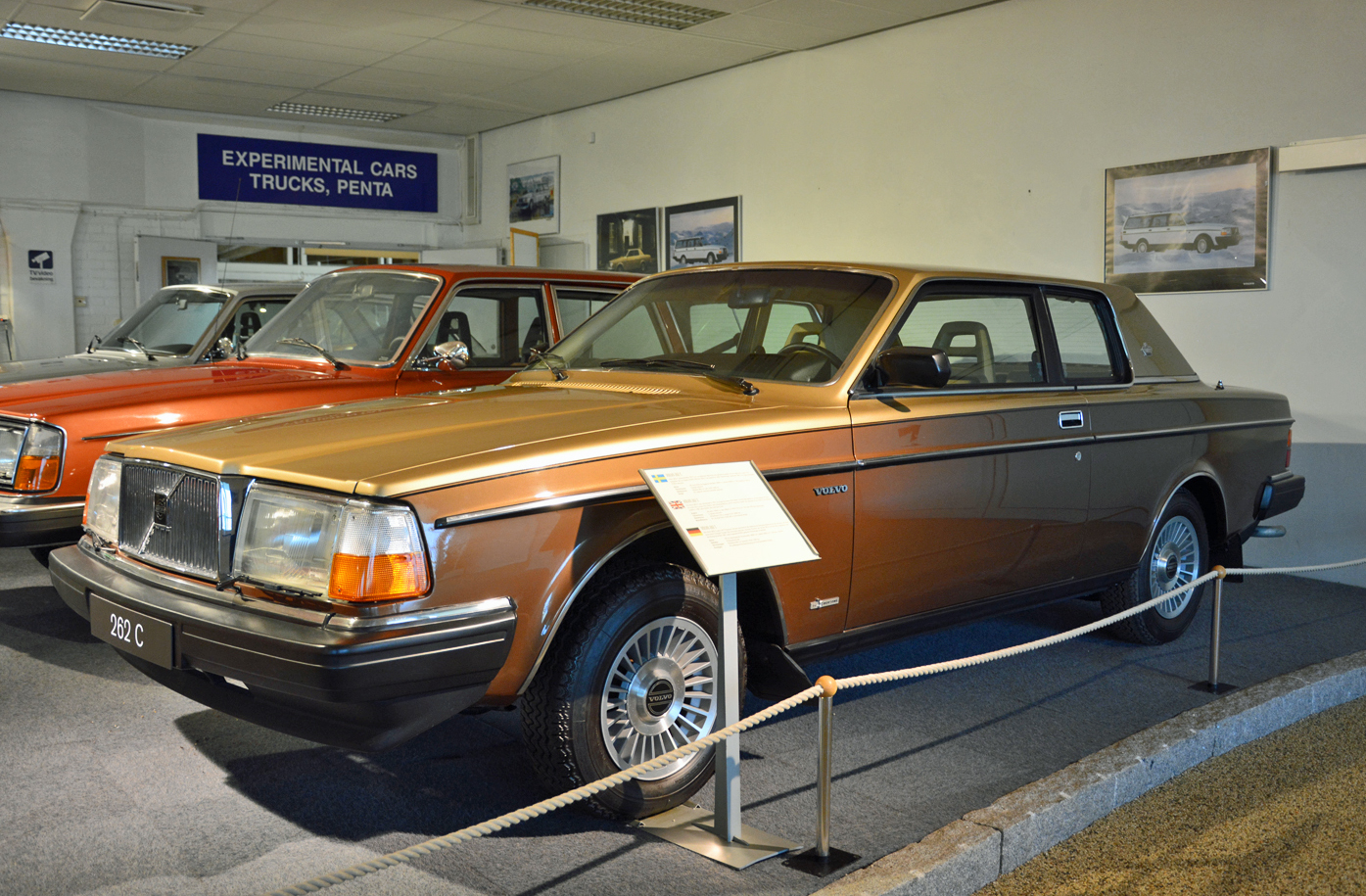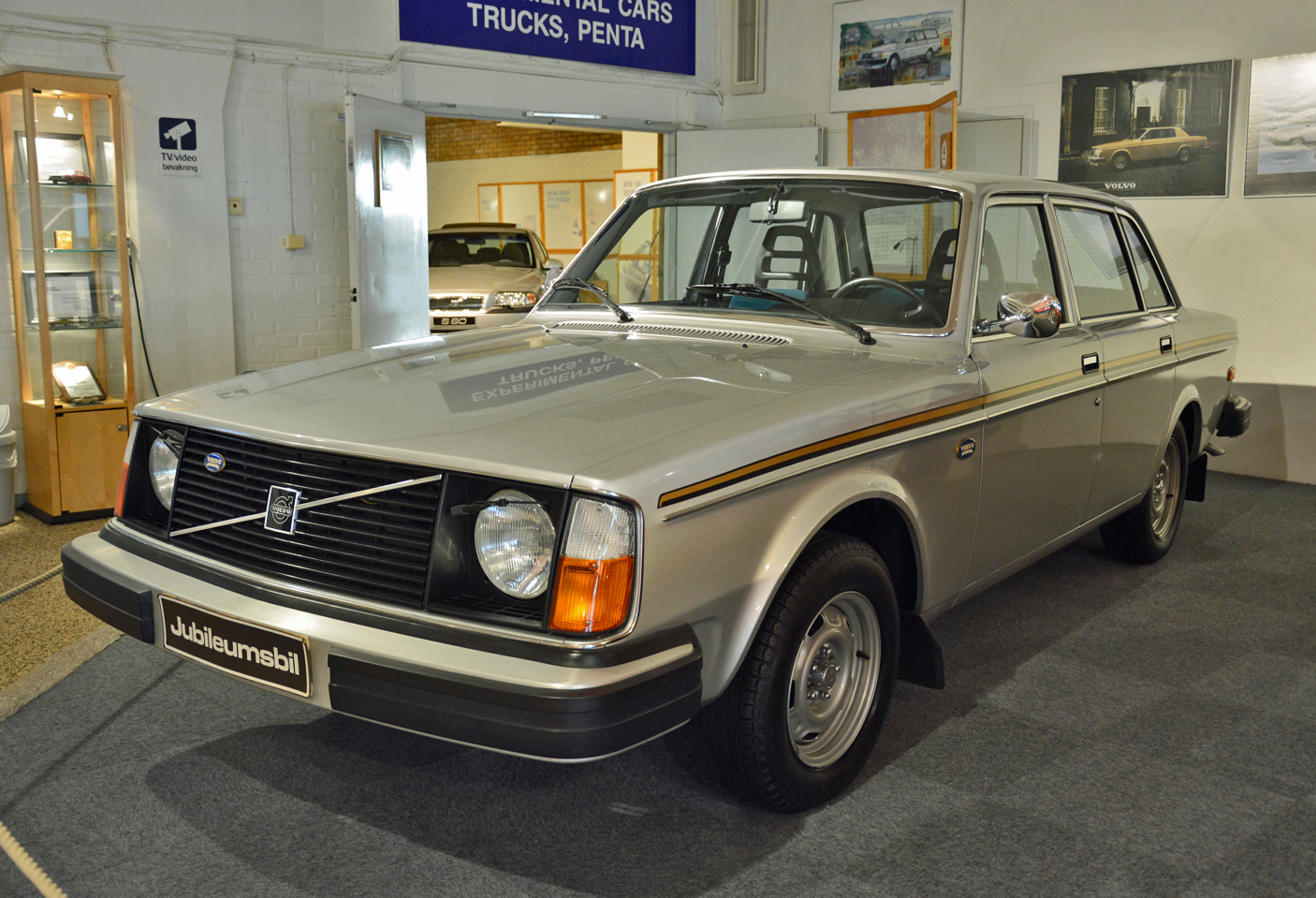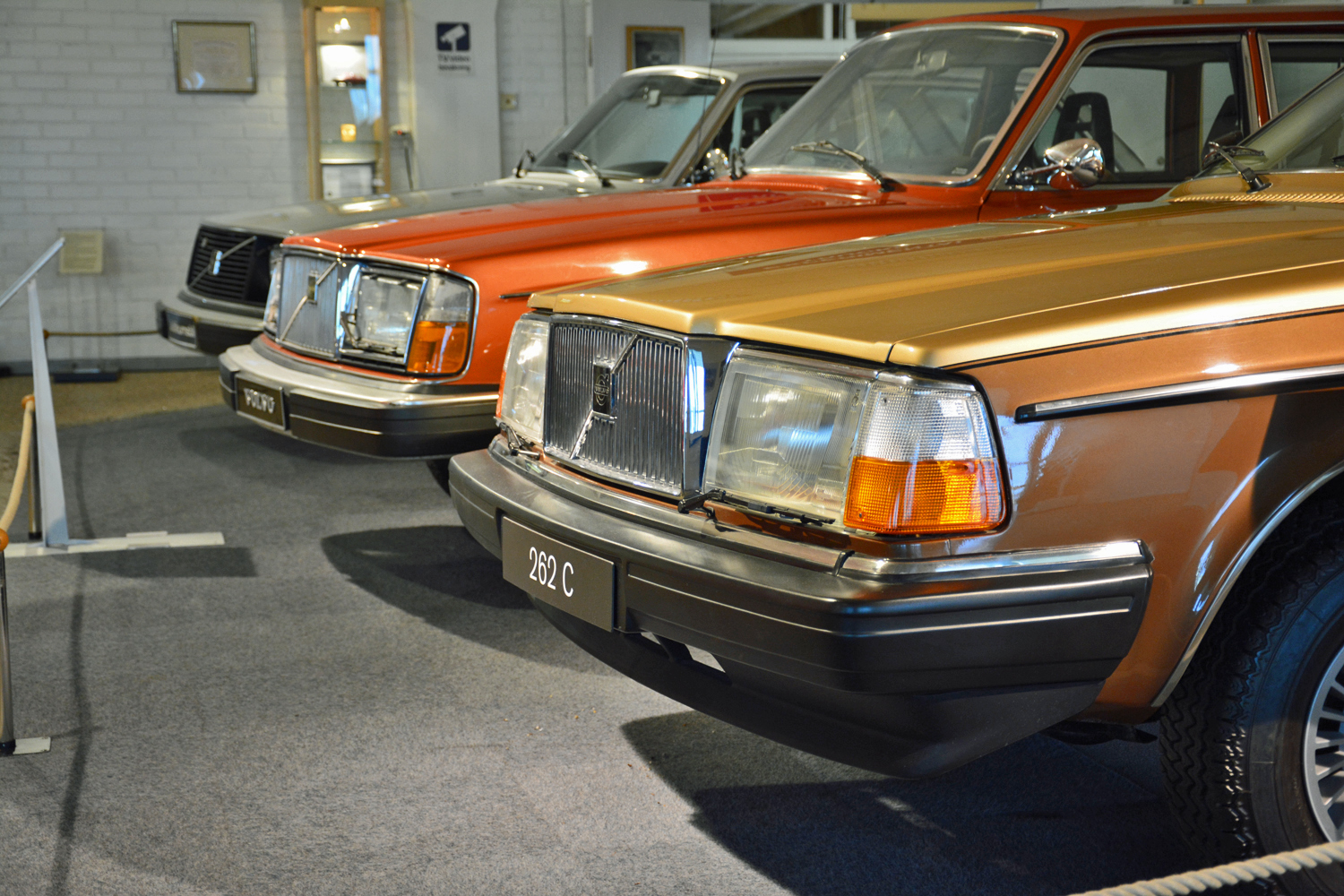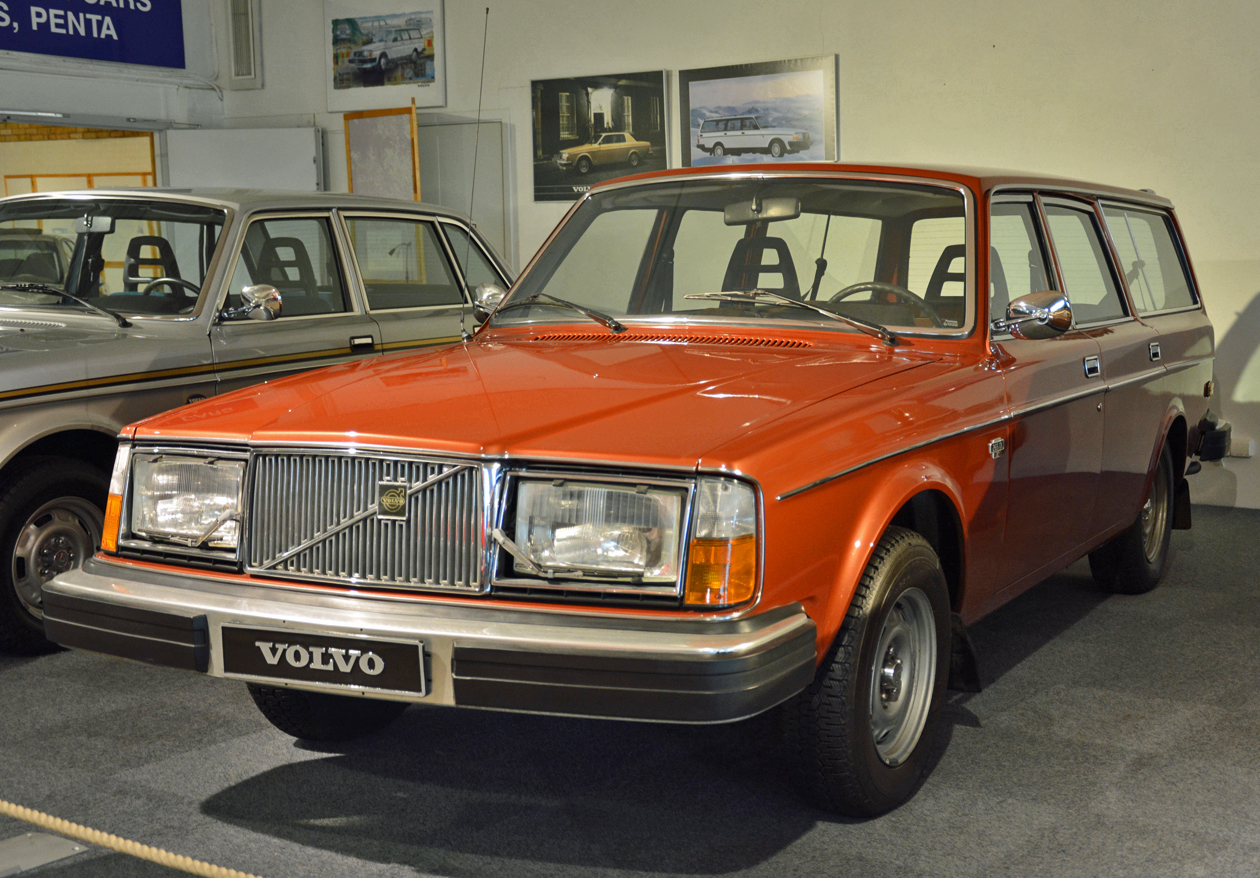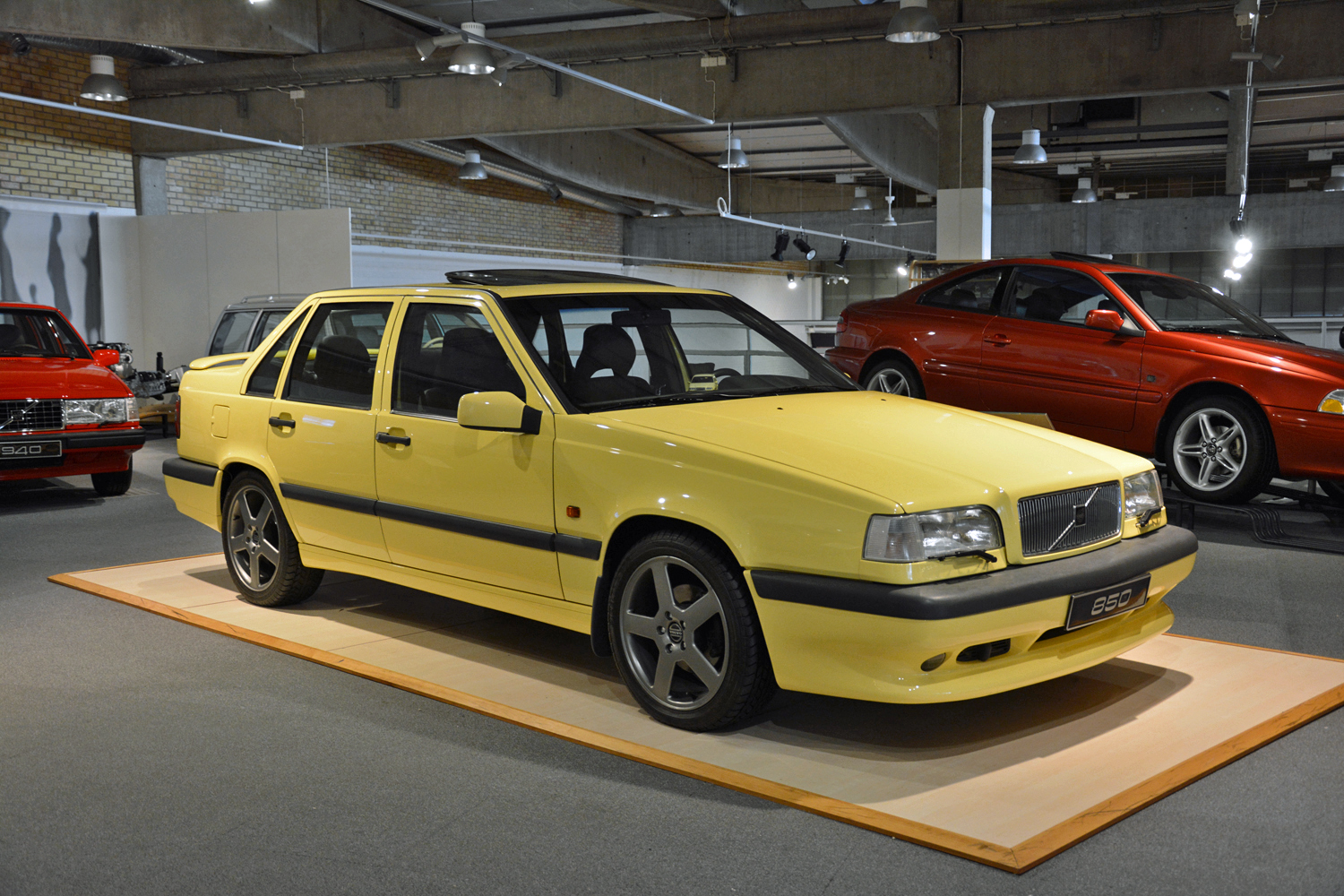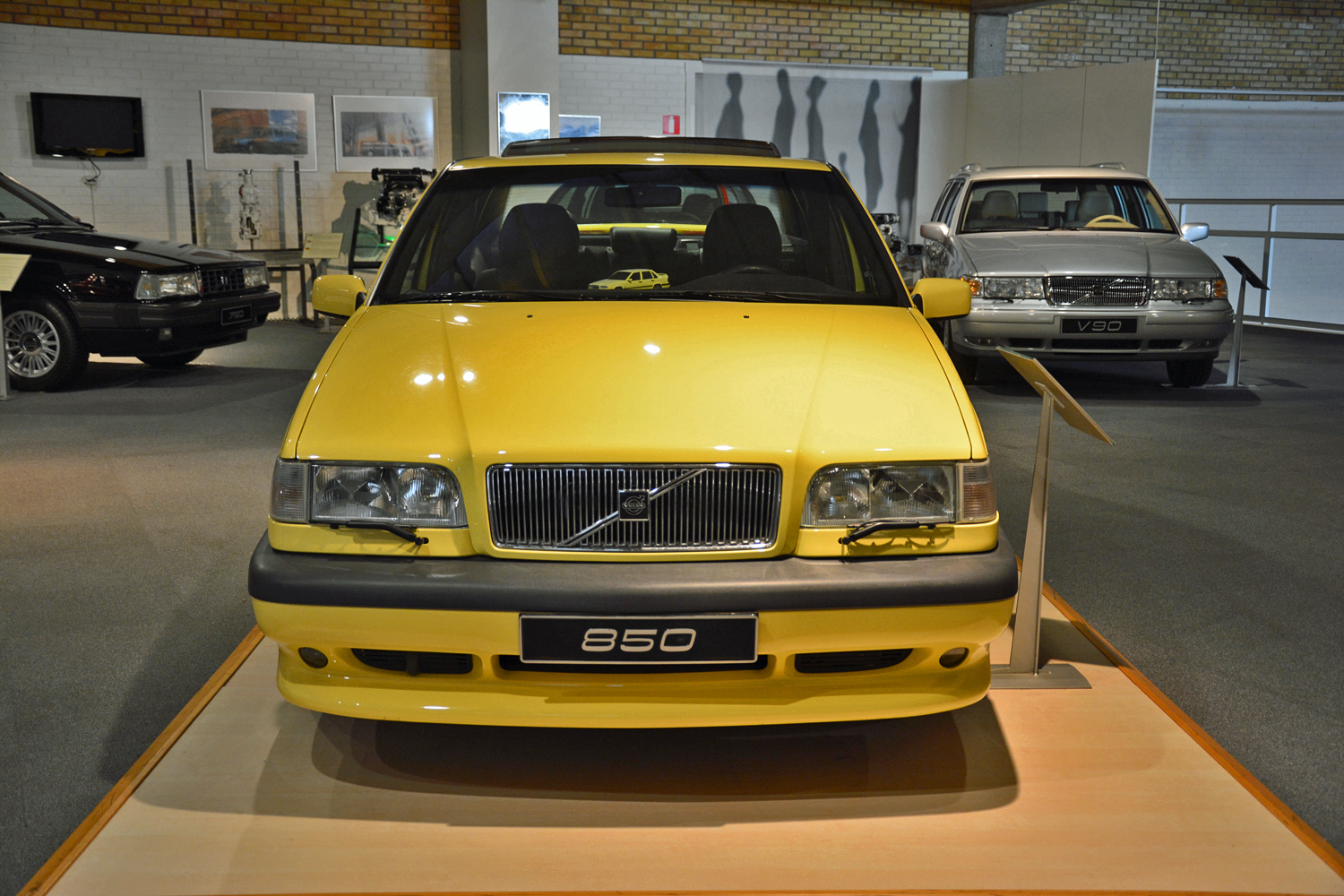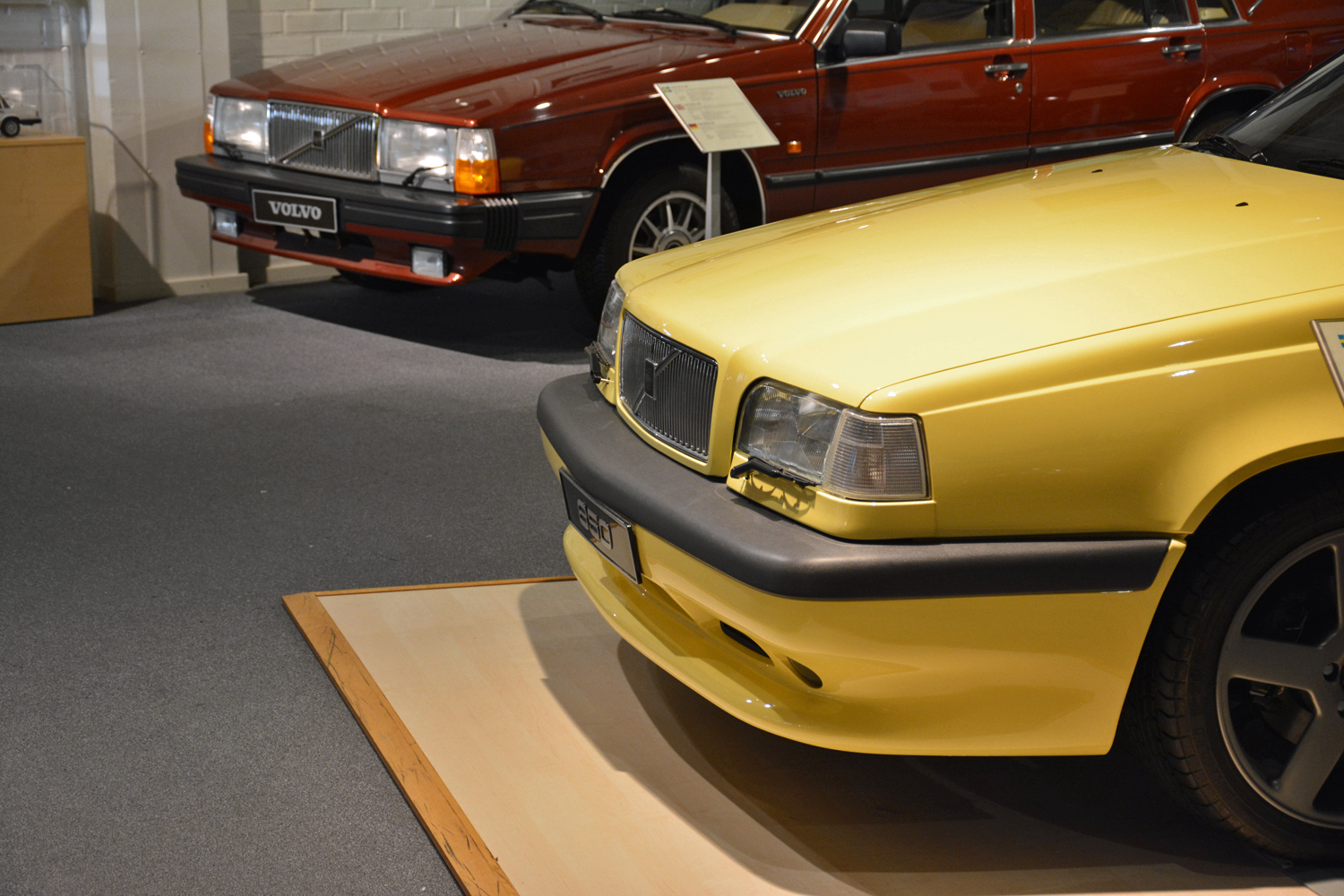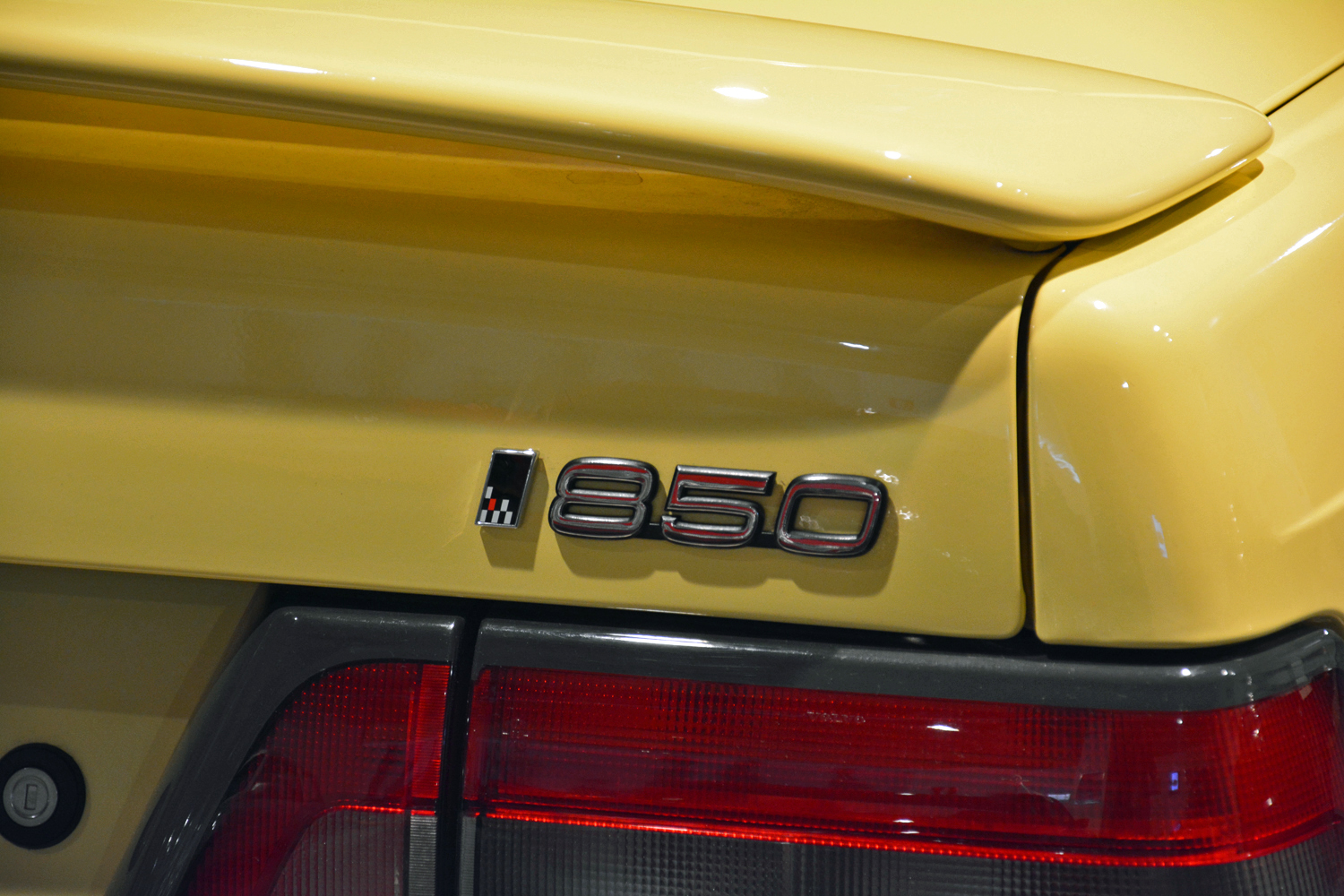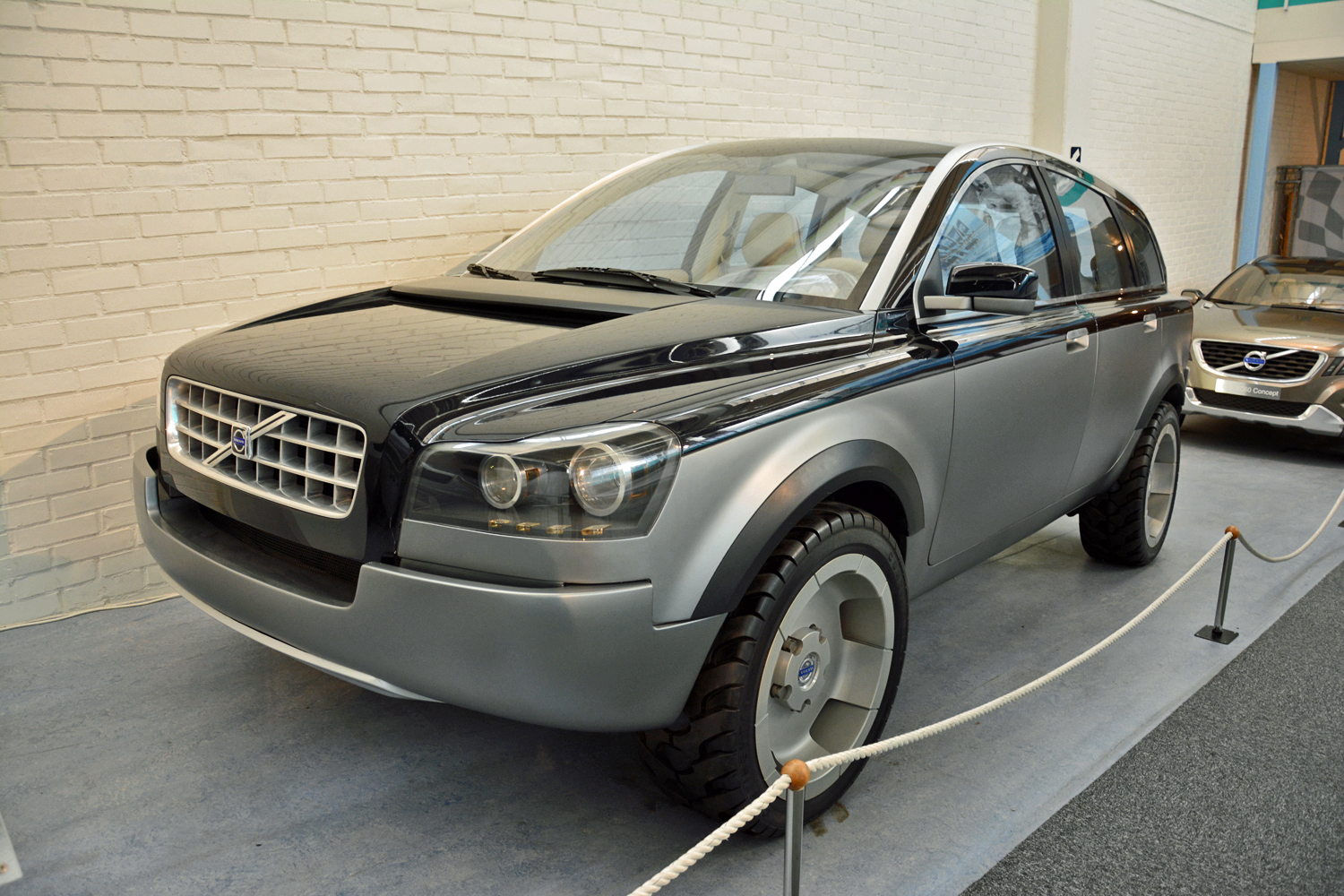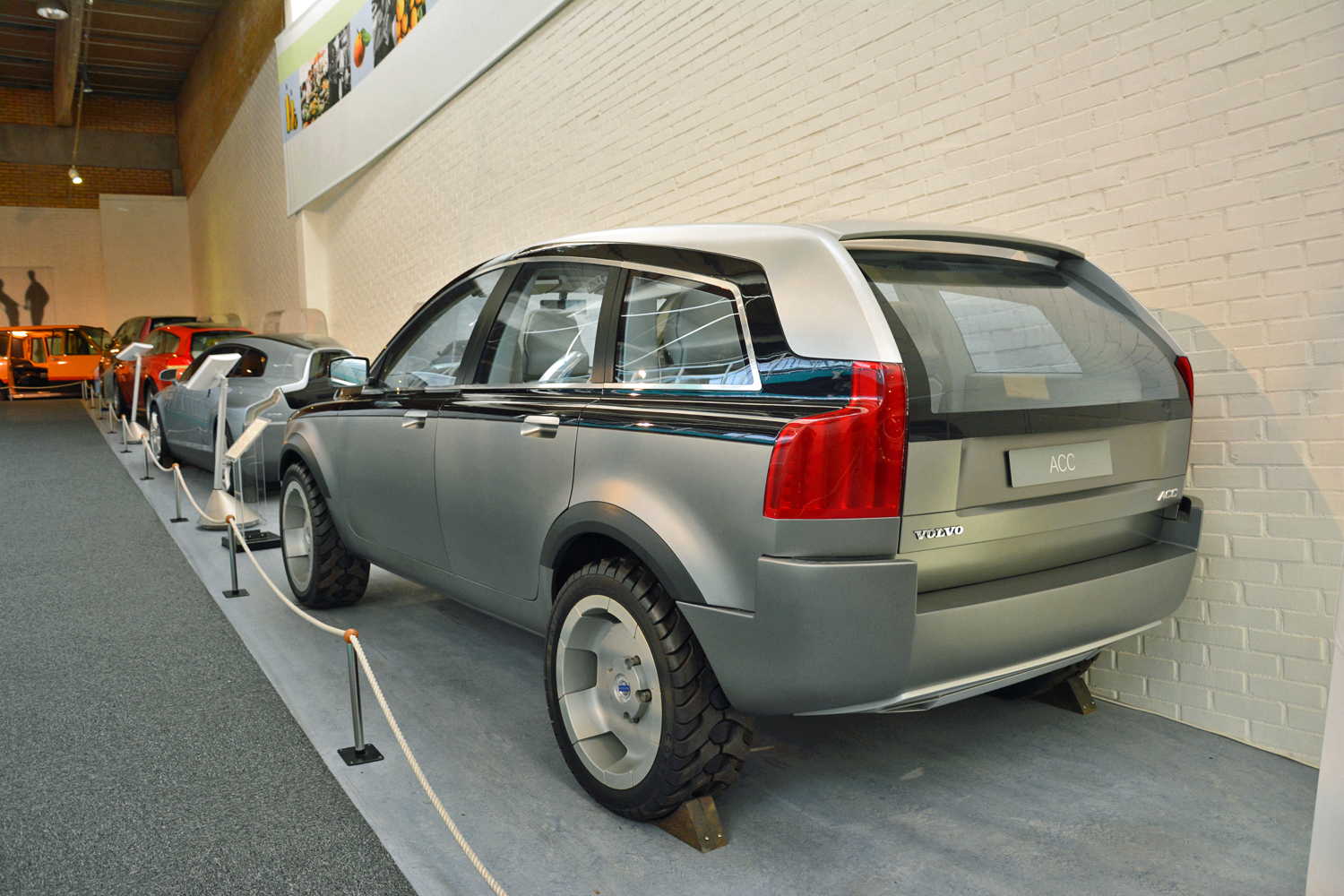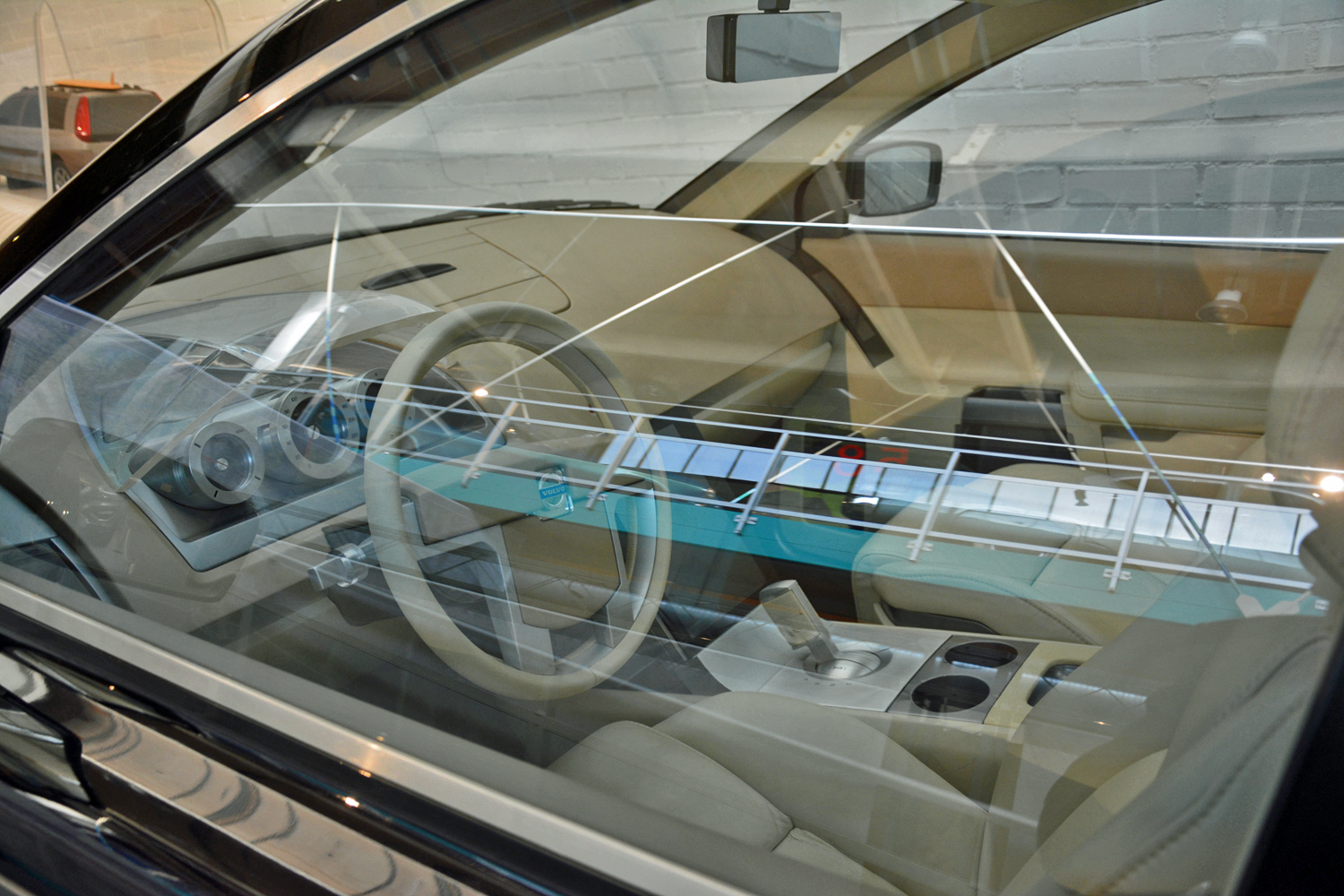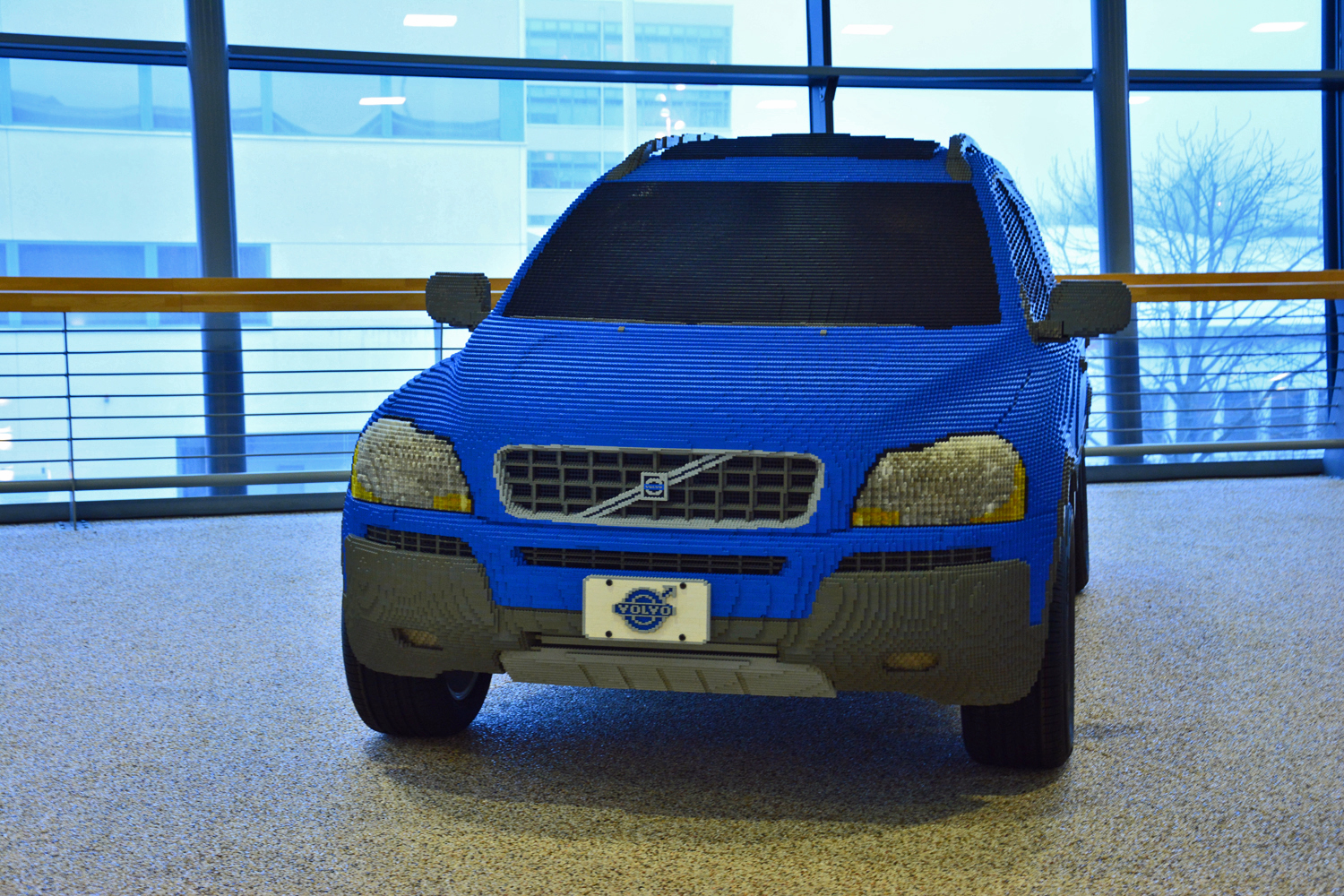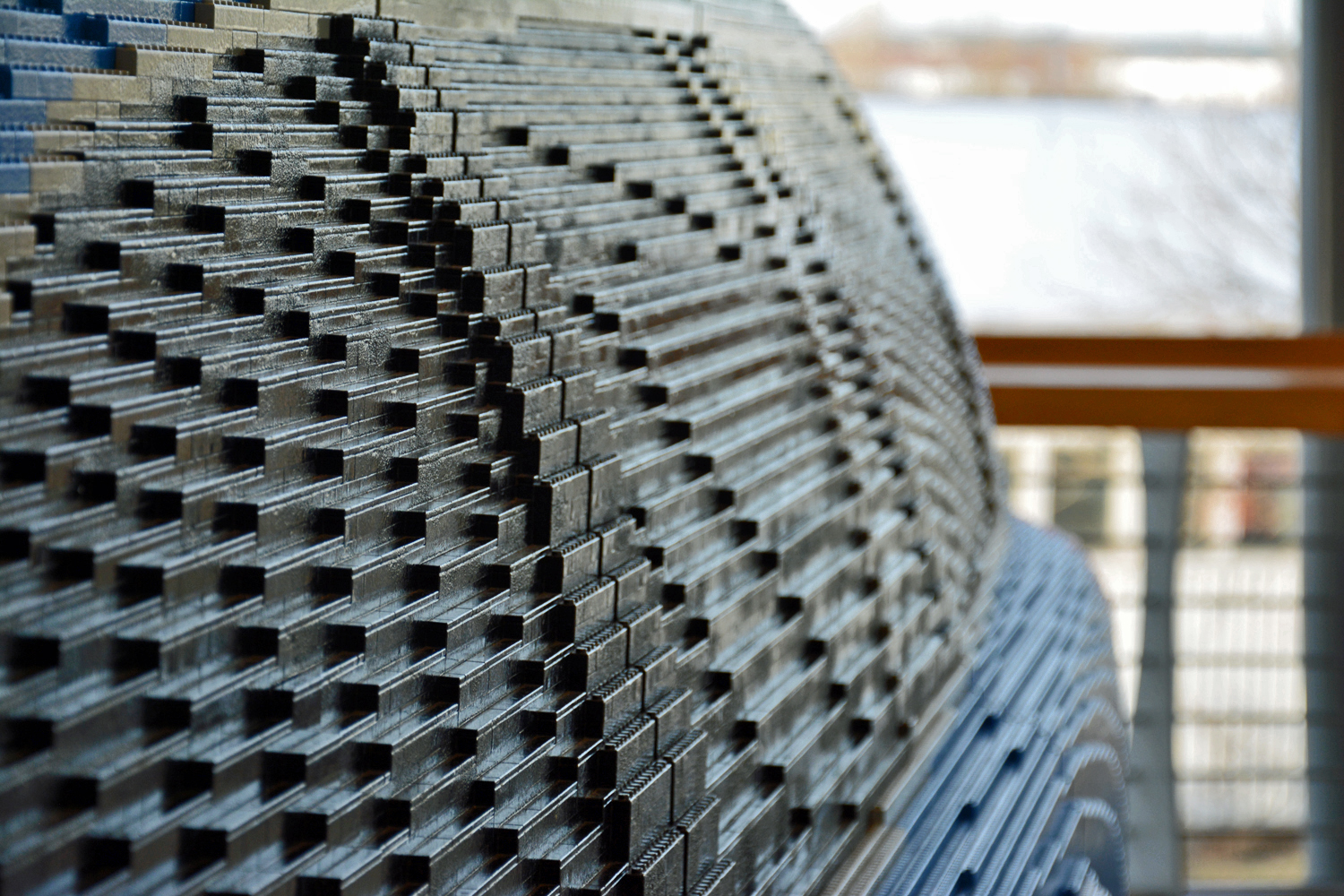You’re forgiven if you think that Volvo’s history is limited to the P1800 and the 240; those are the two models that get the most attention. However, a stroll through Volvo’s official museum on the outskirts of Gothenburg, Sweden – its home town – reveals the Volvo Group has dabbled in nearly every type of vehicle over the past 89 years.
Volvo’s two-story museum showcases convertibles, wagons, sedans, coupes, SUVs, trucks, and even pickups. Visitors are treated to cars from the company’s earliest days, one-of-a-kind prototypes designed with safety in mind, race cars, a SUV made entirely out of Legos, and mass-produced classics you still see putting around the streets of Portland, Oregon, on a regular basis. The museum fascinates, educates, and surprises. Did you know Volvo built a 22.6-liter V8 tank engine that developed 410 horsepower and returned 0.9 mpg at highway speeds?
We’ve singled out ten must-see cars from our recent visit to the Volvo museum to give you an idea of just how broad Volvo’s heritage is.
ÖV4
Introduced in April of 1927, the ÖV4 was the very first series-produced Volvo. Its name stands for “Öppen Vagn 4 cylindrar,” which means open carriage four-cylinder in Swedish. It took the form of a four-door, five-seater convertible with a wooden frame and a 1.9-liter four-cylinder engine that made 28 horsepower at 2,000 rpm.
In retrospect, Volvo admits that selling an open-top car in Sweden, where the weather is often cold and wet, wasn’t the best decision. Only 275 examples of the ÖV4 were built over a two-year period. 205 of them were delivered as convertibles, while the remaining 70 examples were either pickups or cab-chassis.
PV36 Carioca
It may not seem like it at first glance, but the PV36 Carioca was a wildly futuristic car when it was introduced in 1935.
At the time, motorists were accustomed to boxy, old-fashioned cars with an upright grille and headlights mounted on top of the fenders. In contrast, the Carioca featured headlights that were almost flush with the bodywork, a swept-back grille, and a rounded, wind-sculpted design loosely inspired by the Chrysler Airflow. In other words, it broke all visual ties with Volvo’s design language.
The Carioca was much more than a bold design. It offered a luxurious interior, and it was powered by a 3.7-liter straight-six side-valve engine that smoothly sent 80 horsepower to the rear wheels via a three-speed manual transmission. The public never warmed up to the design, so just 500 examples were built.
Duett
The Duett, Volvo’s very first station wagon, was launched almost by accident. The story begins in the summer of 1949, when Volvo introduced a more rugged version of the PV444 called PV445 that was exclusively offered as a cab-chassis. Buyers could have one of the roughly 30 independent coachbuilders operating in Sweden at the time turn the 445 into a pickup, a hearse, an ambulance, or a van, depending on their needs.
The 445 was so durable that sales dropped at an alarming rate, and about 1,500 unsold cars were sitting outside of the Volvo factory in early 1952. Assar Gabrielsson, the company’s president at the time, keenly noticed that many 445s had been converted into passenger vans so he asked engineers to develop a 445-based station wagon that could be assembled in-house alongside the cab-chassis model. The car was called Duett, which meant “two cars in one,” and the first example was purchased on July 4th, 1953, by Gabrielsson.
P1900
Inspired by the original Chevrolet Corvette, Assar Gabrielsson decided that Volvo needed to offer a light, sporty two-seater convertible. Enthusiast website Volvo Adventures explains Gabrielsson sent a newly-designed chassis and a mildly modified PV444 drivetrain to Glasspar in California with a note that essentially read “build a fiberglass body around it.”
The first four P1900 prototypes were ready in 1954. Production began two years later, but the convertible suffered from an array of problems including a top that was prone to leaking and a body that cracked and rattled. 67 examples were built in 1956 and 1957, making the P1900 one of the rarest Volvos ever.
P1800 / P1800 ES
The P1800 was Volvo’s second attempt at building a sports car. The company applied the lessons it had learned from the P1900 project in order to ensure the new model would be a success in Sweden and, more importantly, in important export markets like the United States.
Presented in 1961, the stylish P1800 was built on a shortened version of the Amazon sedan’s chassis, and it launched with a new 1.8-liter engine that made 100 horsepower in its initial state of tune. The four-banger’s output was later bumped to 108, 115, and finally 120 horsepower.
The P1800 lineup was expanded with a shooting brake model called P1800 ES in 1971. It gained a longer roof line and a practical, wagon-like rear end that enabled motorists to carry considerably more gear. The P1800 coupe was axed in 1972, and the ES carried on until the following year.
VESC prototype
Volvo launched the VESC project in 1969 in order to study ways to make cars safer, and the finished product was shown to the public at the 1972 Geneva Auto Show. The VESC looked like no other car on the road, for better or worse.
The bumpers had seven inches of travel to protect the sheet metal in the event of a low-speed impact, and the motor mounts were designed to push the engine under the floor in the event of a head-on collision. Inside, occupants sitting in both rows of seats were protected by airbags, and a dash-mounted screen that was roughly the size of a small television displayed images transmitted by a massive camera mounted between the tail lamps.
To say that Volvo was ahead of its time is an understatement: Five-mph bumpers became mandatory in the United States for the 1974 model year, the 1997 Mercedes-Benz A-Class’ engine was designed to slide under the floor in an accident, and all new cars regardless of segment and price will be required to come standard with a rear-view camera in 2018.
240-Series
Writing an article about Volvo history without mentioning the 240 and its numerous derivatives would be heresy; for many, the 240 remains the quintessential Volvo.
Introduced in the 1974, the 240 was a careful evolution of the 140-Series that incorporated safety features borrowed from the VESC prototype detailed above. It was offered as a four-door sedan, a two-door sedan, and, of course, a spacious station wagon. Volvo even added a Bertone-designed coupe to the lineup a little later in the production run.
The 240 cemented Volvo’s reputation for building safe, solid, and boxy cars. It was quick, too. The 245 Turbo was the fastest wagon on the planet when it was launched, and a heavily modified 240 Turbo powered by a 300-horsepower engine won the vaunted driver’s championship in the 1985 European Touring Car Championship.
240 production ended in 1993 after 2.8 million examples were built.
850 T-5R
Volvo introduced a hot-rodded version of the 850 in 1995 to capitalize on the 850 wagon’s success in the British Touring Car Championship (BTCC). Called T-5R, it was equipped with a turbocharged 2.3-liter five-cylinder engine that was tweaked with input from Porsche to deliver 243 horsepower and 250 lb-ft. of torque. Buyers could order the T-5R as a sedan or as a station wagon.
Volvo initially planned on selling 2,500 examples of the T-5R, but demand was so high that 5,500 examples were ultimately built. With the T-5R, Volvo proved once and for all that rival Saab wasn’t the only Swedish car maker that knew how to build a seriously quick turbocharged sedan.
ACC Concept
Volvo debuted the bold Adventure Concept Car (ACC) at the 2001 edition of the Detroit Auto Show. The concept was billed as merely a design study developed to gauge the public’s reaction to the company’s first-ever SUV.
The ACC stood out thanks to a rugged look characterized by a tall front end, massive alloy wheels wrapped by off-road tires, and an eye-catching three-tone paint job. The four-seater cabin was decked out with a fridge, a television, and an immensely powerful sound system.
The ACC generated a favorable response from the public, the press, and would-be buyers. The first-generation XC90 that was unveiled a year later at the same event was a heavily toned-down version of the concept.
XC90 made out of Legos
Volvo teamed up with Lego to build a life-sized first-generation XC90 entirely out of the famous plastic bricks. The wheels, the tires and the chassis were all sourced from the Volvo parts bin, but the rest of the car was assembled using no less than 201,076 bricks. The SUV isn’t functional, but it nonetheless tips the scale at nearly 3,000 pounds.
It took five Lego Master Builders a total of ten weeks to build the XC90 one brick at a time. The final product was displayed at Legoland outside of San Diego, California, to help young visitors learn about automotive safety.
Photos by Ronan Glon/Digital Trends

